The best non-toxic air fryers - for safe, reassuring cooking
Whether you're cooking on glass, ceramic, or stainless steel, it's nice to know you're safe

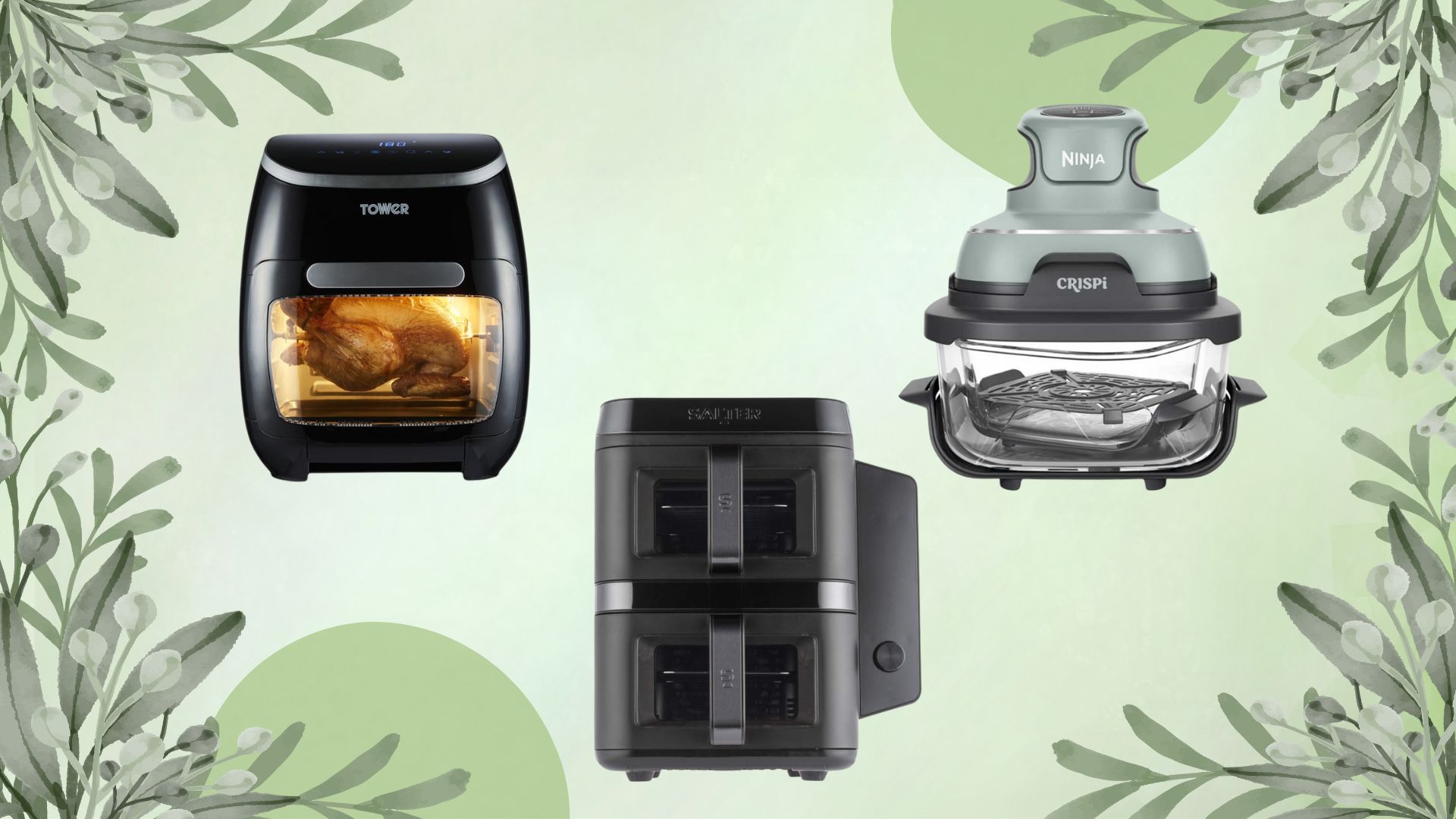
There's a lot of chatter around the non-sticks that air fryers use. When kept in good condition, all air fryers should be safe, but if you want to be extra-careful, you can take a look at models that are explicitly non-toxic.
I've consulted toxicologists, food scientists, and sustainability experts to get all the details on the best non-toxic air fryers you can buy. In short, they say that truly non-toxic air fryers are models that use a natural coating, such as stainless steel, ceramic, or glass. Unlike other non-sticks, these don't contain 'forever chemicals' (you may have seen them called PFAS, BPA, and PTFE) that come with health concerns when ingested or inhaled in high amounts.
As a naturally cautious cook and our resident air fryer expert, I thought it was time that I pulled my expertise with all the information I've gleaned in my interviews and research. Not only are these air fryers non-toxic, they're some of the best air fryers that I've tested (which numbers nearly 75 now). So, if you want safer food without any health worries, this is the place to be.
What is a non-toxic air fryer?
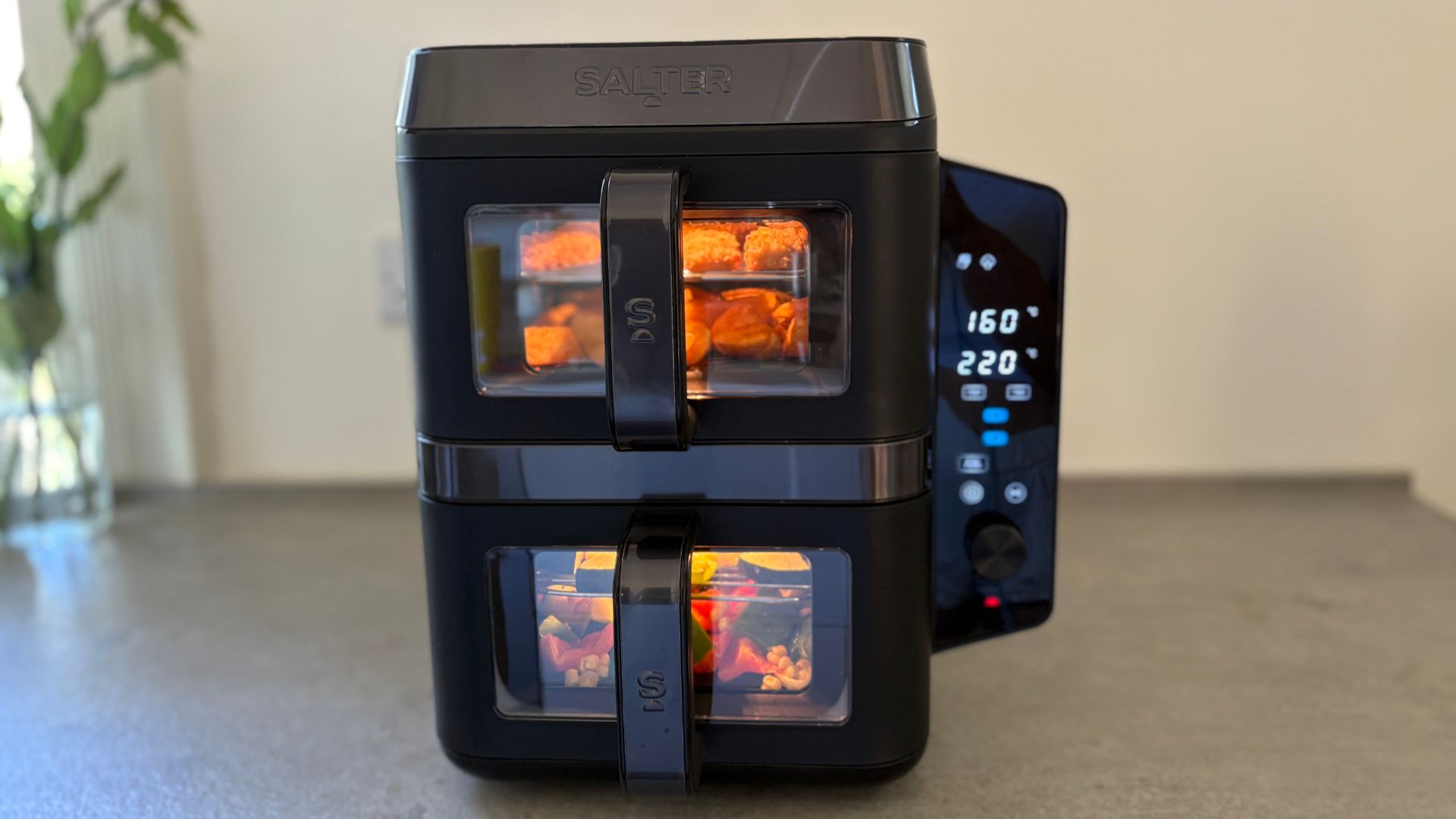
Air fryers, when used correctly, are all non-toxic. Concerns began when people looked into the potential risks of overheating or damaging some non-sticks and that's what I'll break down here. If you already know the difference between non-toxic air fryers and the rest of the bunch, you can skip to my roundup of the best models here.
Concerns over air fryers mainly centre around the materials used in the non-stick coatings. You'll see lots of chemical terms listed that you want to avoid including PFAS, PTFE, PFOA, and PFA, as well as brand names like Teflon. Dr Roxy Swails, industry expert in sustainability, explains "the biggest concern with these "forever chemicals" is related to the parts that come into direct contact with food like the basket or tray. If the coating gets scratched or worn down, there is a chance that small particles could get into your food."
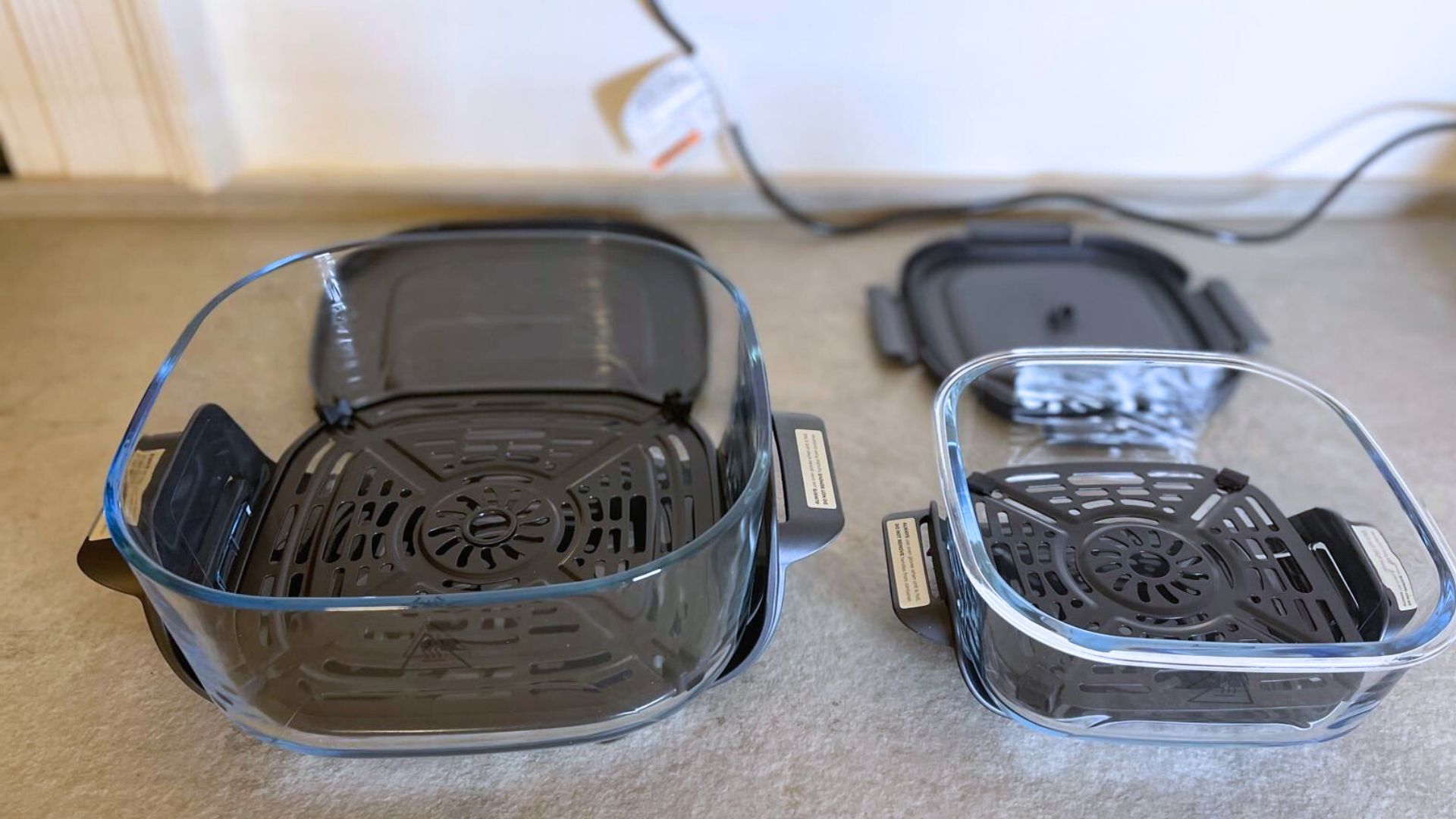
The reason people see this as a problem, is explained by Food Scientist, Ed McCormick explains that "these have been linked to hormone disruption and other health issues when ingested or inhaled in high amounts." Dr. Swails adds that the chemicals "can cause environmental problems not only when they are thrown away, but also during their manufacturing process."
You're unlikely to ingest or inhale the chemicals with proper use, but Ed points out that exposure happens "if the coating flakes or overheats.” Damage and flaking can come from using an abrasive cleaner, some oil sprays (if it is an aerosol, this will break down the coating), or scratching with metal utensil (a reason the best air fryer accessories are all silicone and non-stick).
Of course, you'll also want to avoid burning and ingesting food that is carbonised, but the most important aspect of safely using an air fryer revolves around the coating. Rebecca Safier, from The Eco Edit, reassures us "it is possible to find air fryers with non-stick coatings that don't contain PFAs or PTFEs. When shopping for non-toxic air fryers, opt for safe materials like ceramic, glass, and non-toxic stainless steel. The same advice goes for other types of cookware, like pots, pans, and baking sheets."

With her hands-on industry experience in spearheading sustainable product initiatives, and more than eight years as a professor of green chemistry, Roxy helps Assent customers improve their compliance and sustainability programs. She guides manufacturers’ responses to REACH, RoHS, Proposition 65, and TSCA requirements. In her career as a global product stewardship and sustainability expert, she has led PFAS elimination efforts, life cycle analyses, and risk management programs. Roxy holds a PhD in organometallic chemistry from the University of Florida.

Ed is a Food Scientist with over 20 years in ingredient safety and consumer kitchen technology. He has founded Cape Crystal Brands, which offers expert advise to chefs, food technologists, and creators to help them with safer, better food and cooking.

Rebecca co-founded, runs, and researches The Eco Edit, a place rich with information about eco-friendly living. She was ahead of the non-toxic air fryer trend, becoming a relative authority on all things safe and speedy.
The best non-toxic air fryers
You'll be pleased to know that choosing a non-toxic air fryer is simple. There are some brands (Ninja and Salter in particular) that use ceramic on most of their air fryers. I could have filled a guide with all their different models, but I want to keep it down to my top three favourites and offer you some variety.

Non stick coating: ceramic
With a whopping 9-litre capacity, the Salter can feed at least six people without breaking a sweat. The side panel offers 12 handy pre-sets that'll stop your food from burning and you can keep an eye on what's cooking with a handy viewing window. It even comes with clever accessories that transform two drawers into four shelves.
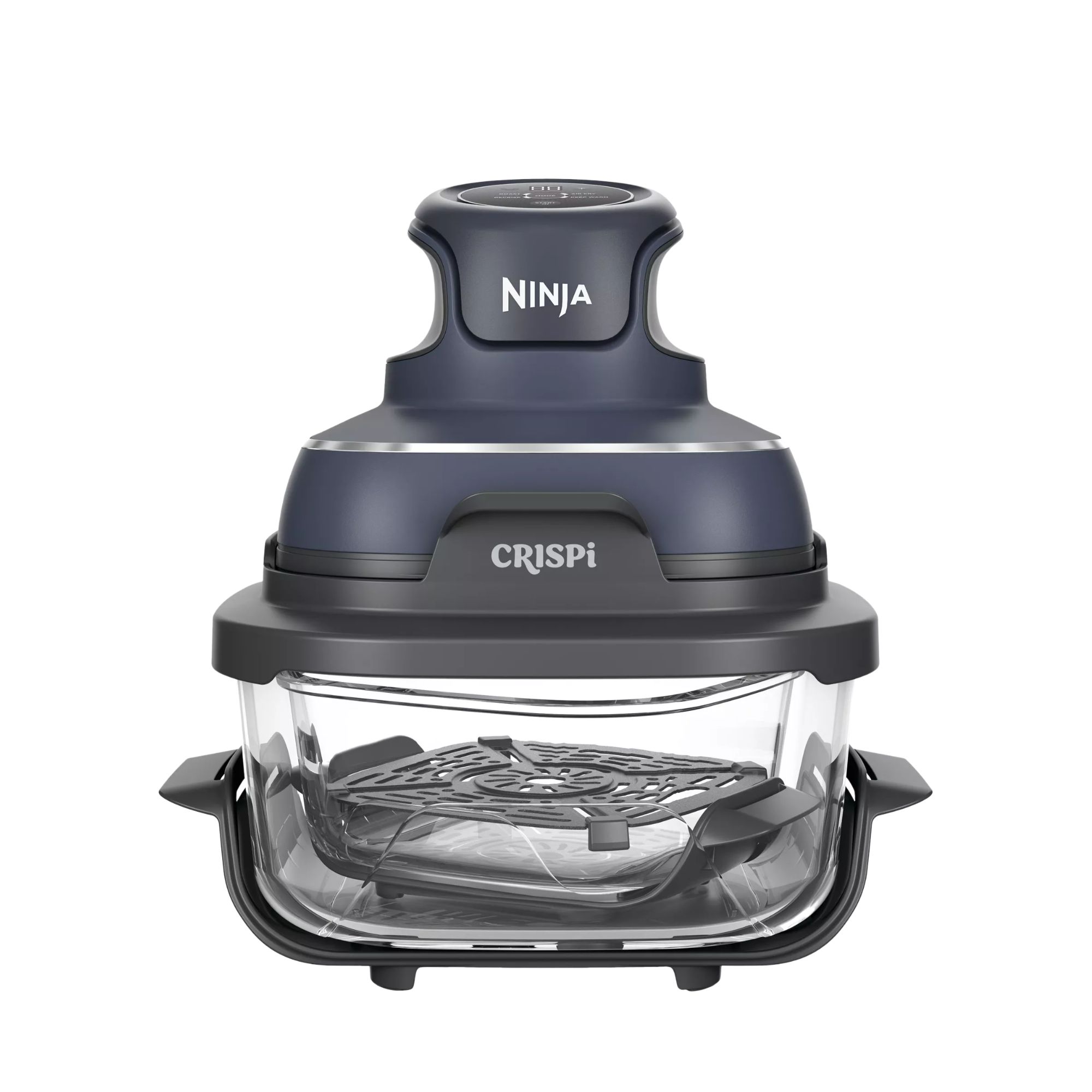
Non-stick coating: ceramic
There isn't another air fryer like this on the market, but it's a true hero. The attachment on top clips onto special Ninja glass air fryer dishes. It cooks food in the same container that you could use for storage. I can fit all this in a drawer, which is remarkable given most air fryers can't even get in a cupboard.
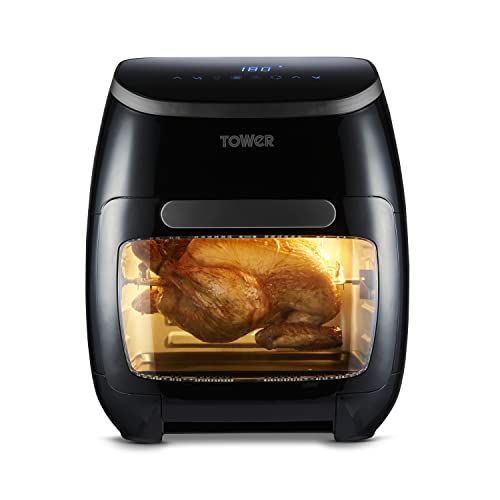
Non-stick coating: stainless steel
The Tower often gets overlooked, but it's an impressive oven. The clear viewing window makes it easy to keep an eye on your food, and you'll have 10 different pre-sets that take you from baking and roasting through to dehydrating. For the price, it's exceptional. Compared to every other oven, it's remarkable. To me, that's unmissable.
Best non-toxic air fryer for a family

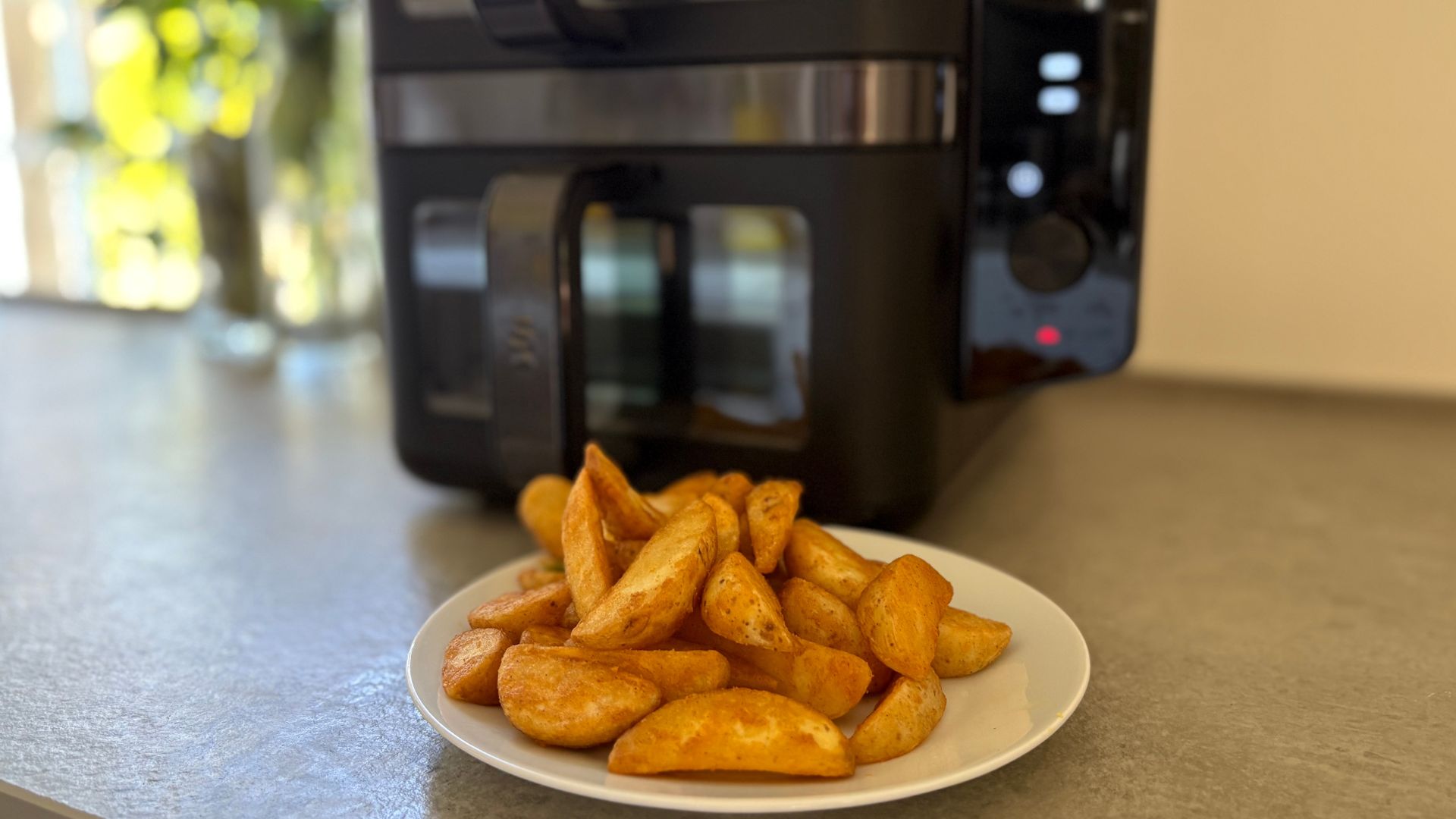
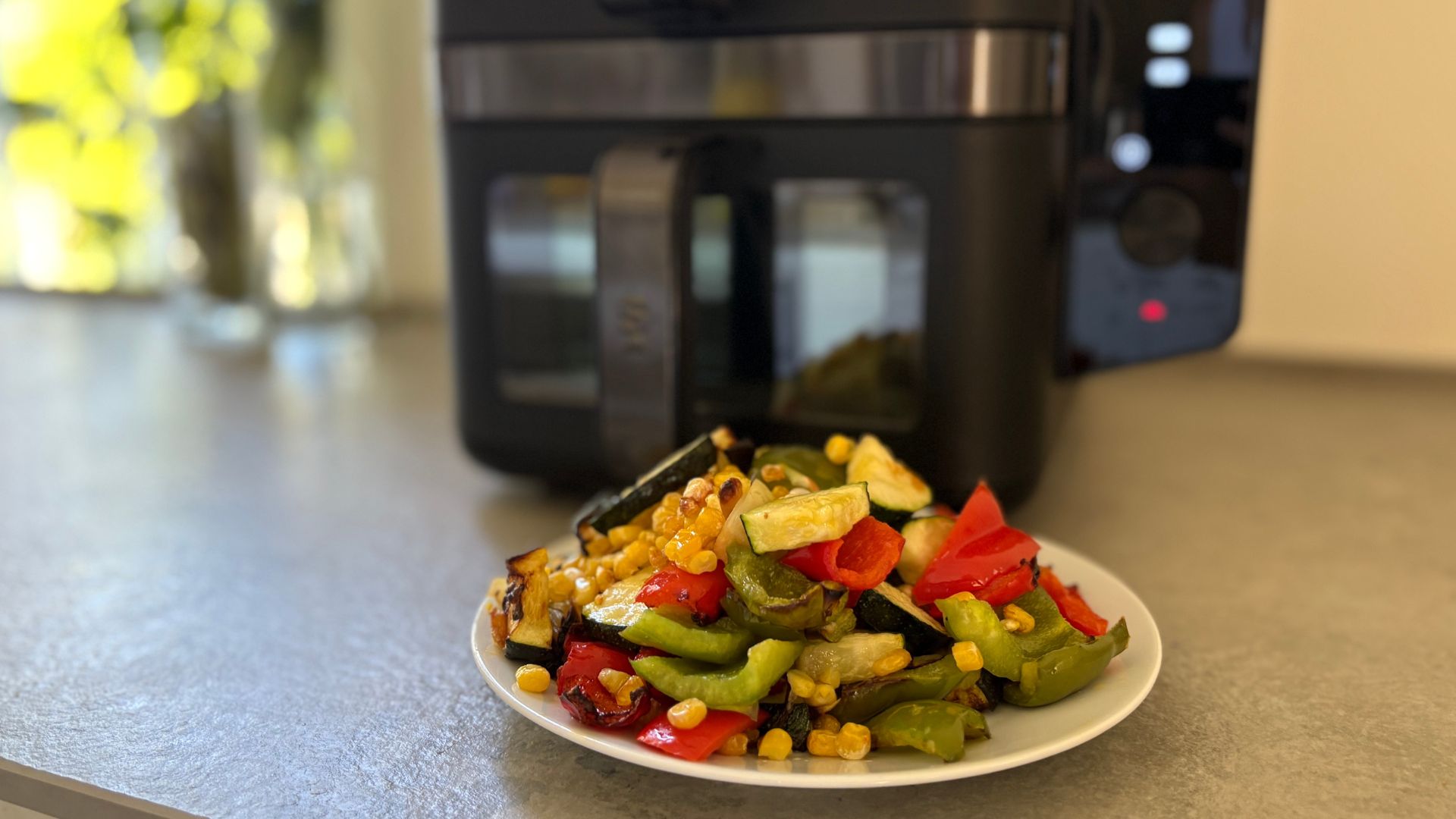
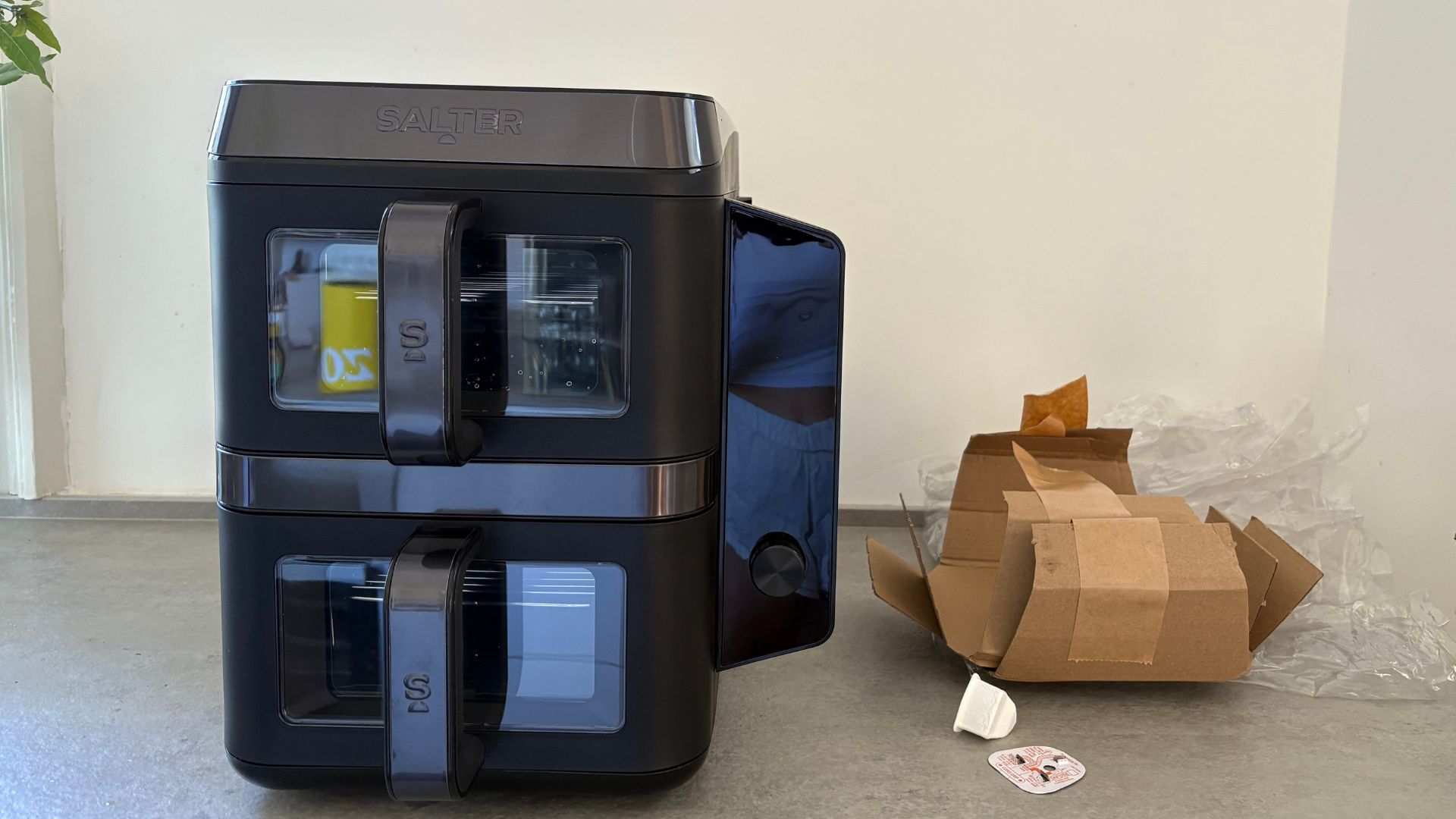
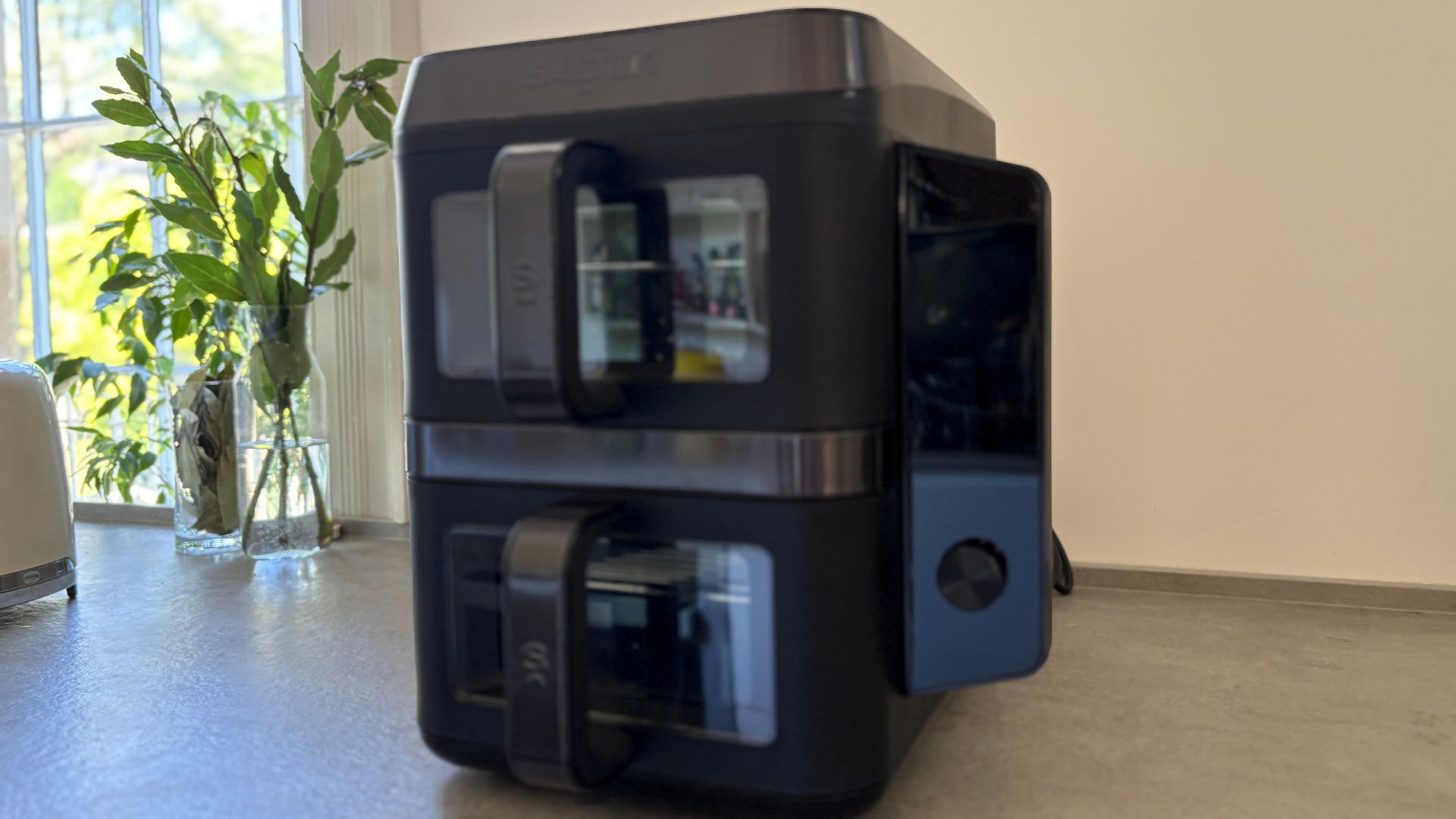
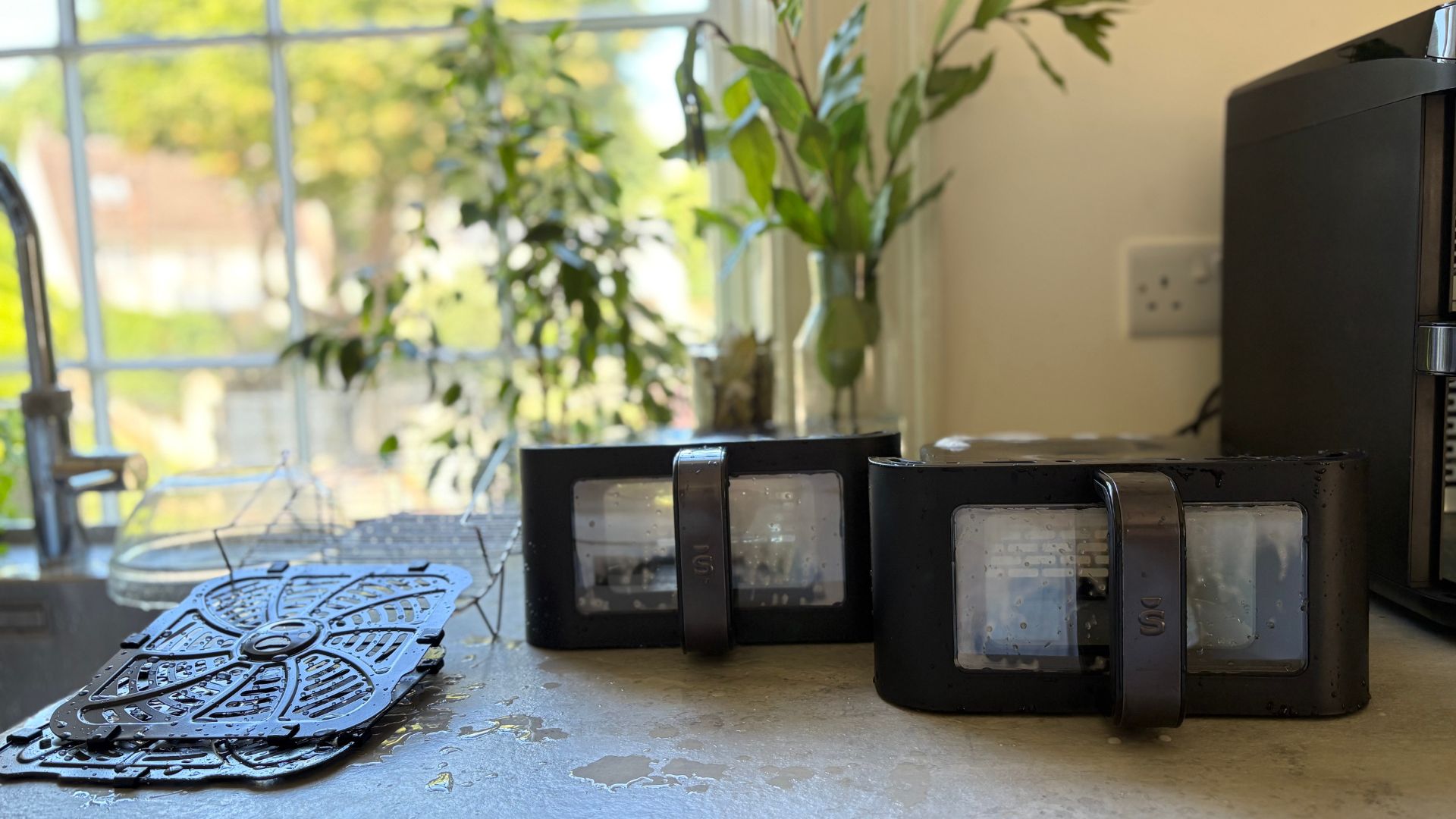

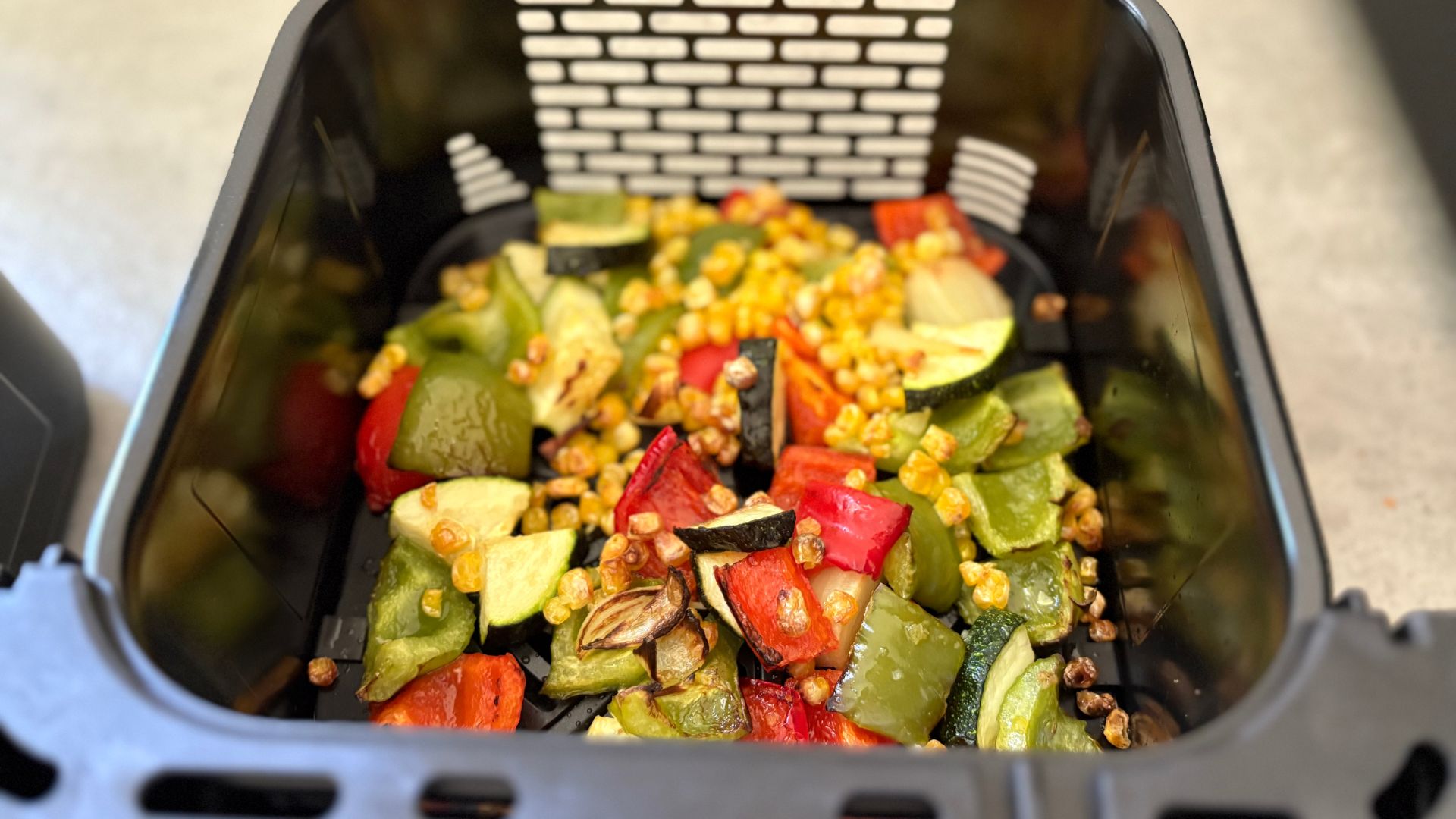
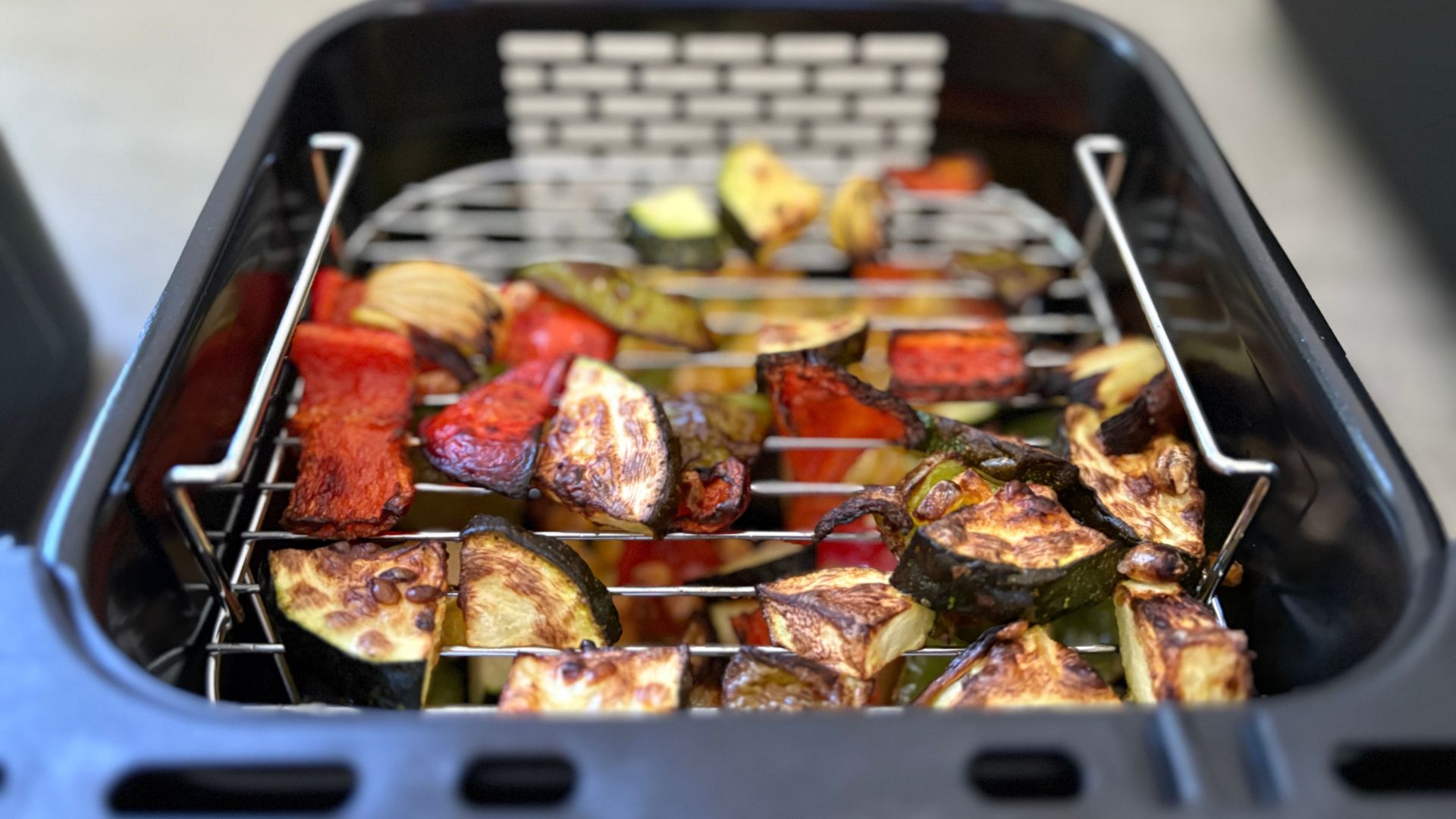
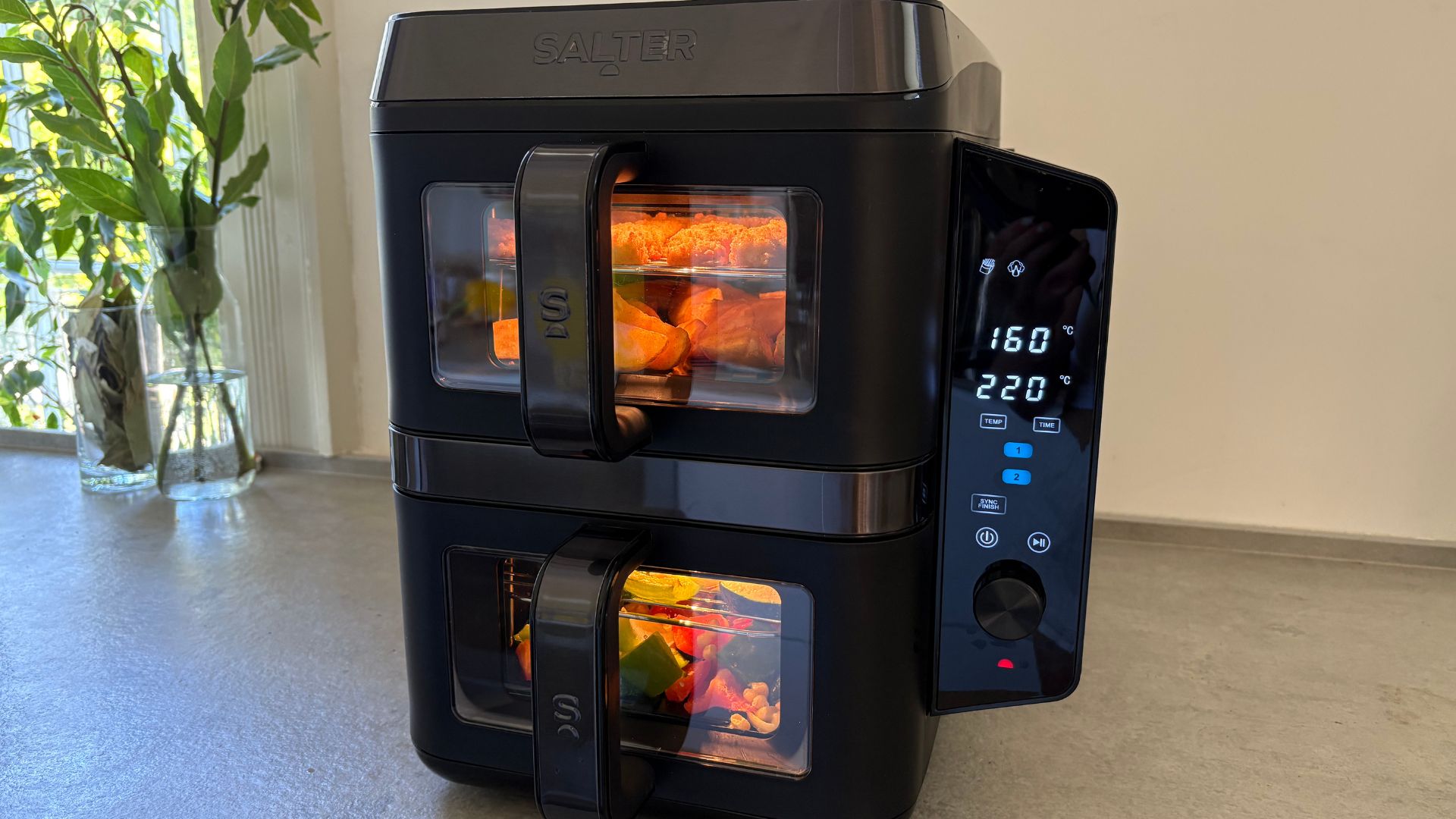
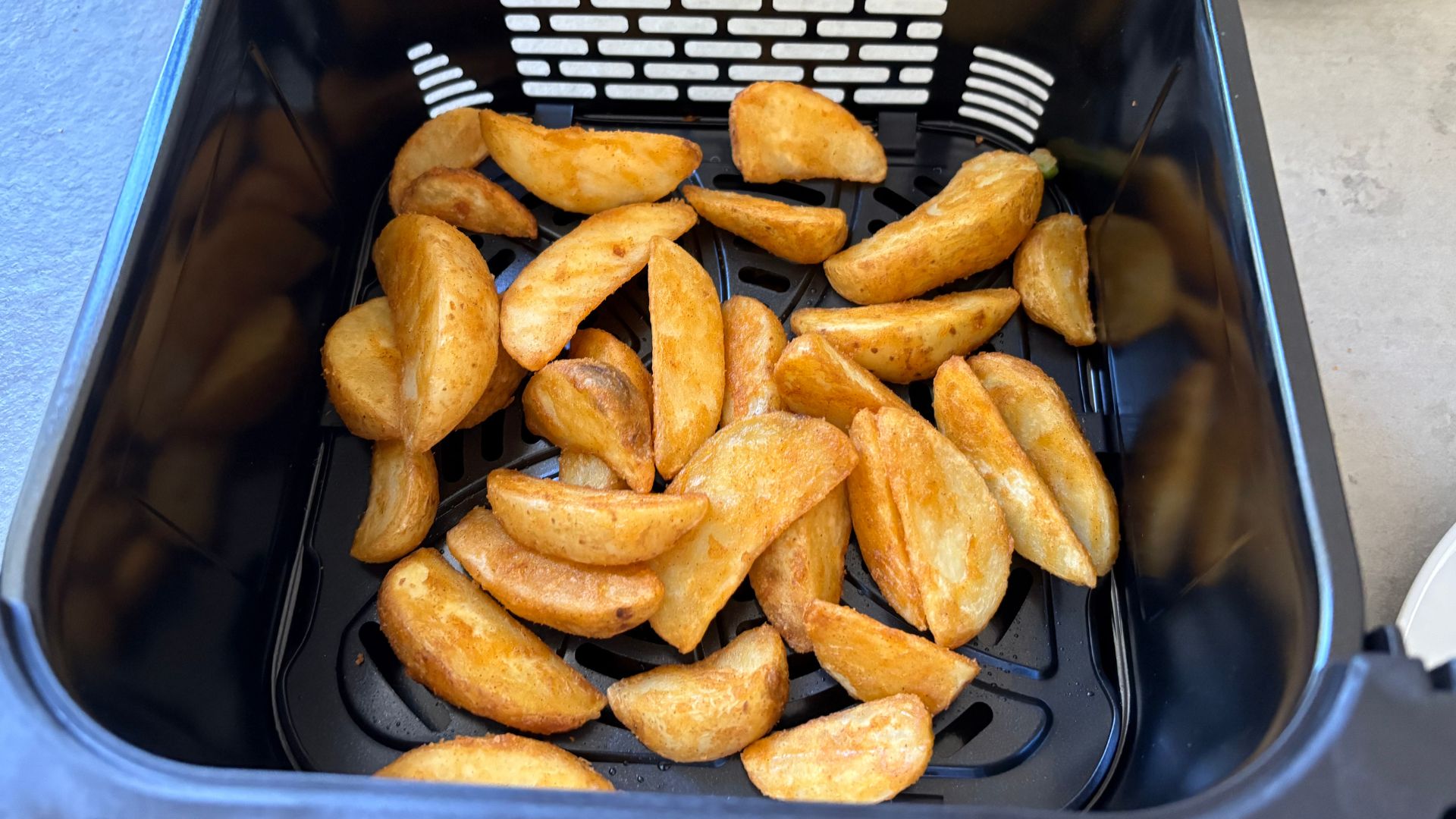

1. Salter VertiCook Air Fryer
Our expert review:
Specifications
Reasons to buy
Reasons to avoid
The first thing you'll want to know about the Salter VertiCook Stackable Air Fryer is that it uses ceramic as a non-stick. Saul Davies, Buying Director for Salter.com explains that ceramic is used as a non-stick coating for VertiCook’s air fryer baskets primarily because it is non-toxic and free from harmful PFAS chemicals, which are often found in traditional non-stick coatings. This makes it a safer choice for high-temperature cooking, as it won't release toxic fumes. In addition to being safe, ceramic offers good non-stick performance, making food easy to release and clean up. It's also eco-friendly and scratch-resistant, making it a popular choice for modern air fryer designs.
Having cooked (and burnt) a whole menu of different foods, from Mediterranean vegetables to brownie batter, I can confirm that the ceramic makes a fantastic non-stick. All burnt residue and oil simply slides off all the trays and baskets. Ceramic is used to coat lots of non-toxic air fryers, so why did this one steal a spot?
The choice wasn't hard. I found the Salter to be almost unbelievably good. One of the best features is the clever way that this maximises capacity. It's made up of two, 4.5-litre drawers stacked on top of each other, which means that you have a full 9-litre air fryer that only needs the footprint of a small air fryer. On top of that, Salter provides metal racks, that double the space inside each drawer, so you effectively end up with four levels to air fry on. I was cooking enough to comfortably feed six people (with hefty appetites) in here.
You've also got the bonus of clear viewing windows at the front, so you can see how well your food is cooking. I liked this for reassurance, but the 12 different pre-sets on offer ensured that all my different foods were cooked perfectly anyway. Even when I second-guessed the timing of some chips cooking, the air fryer was right. It knows how to use an air fryer better than anyone else.
At half the price of most lookalikes, Salter is one of those brands that does sustainability and safety in a subtle way. It's the perfect air fryer for a family.
Find out more in my full Salter Verticook View Air Fryer review.
Best non-toxic air fryers for small spaces

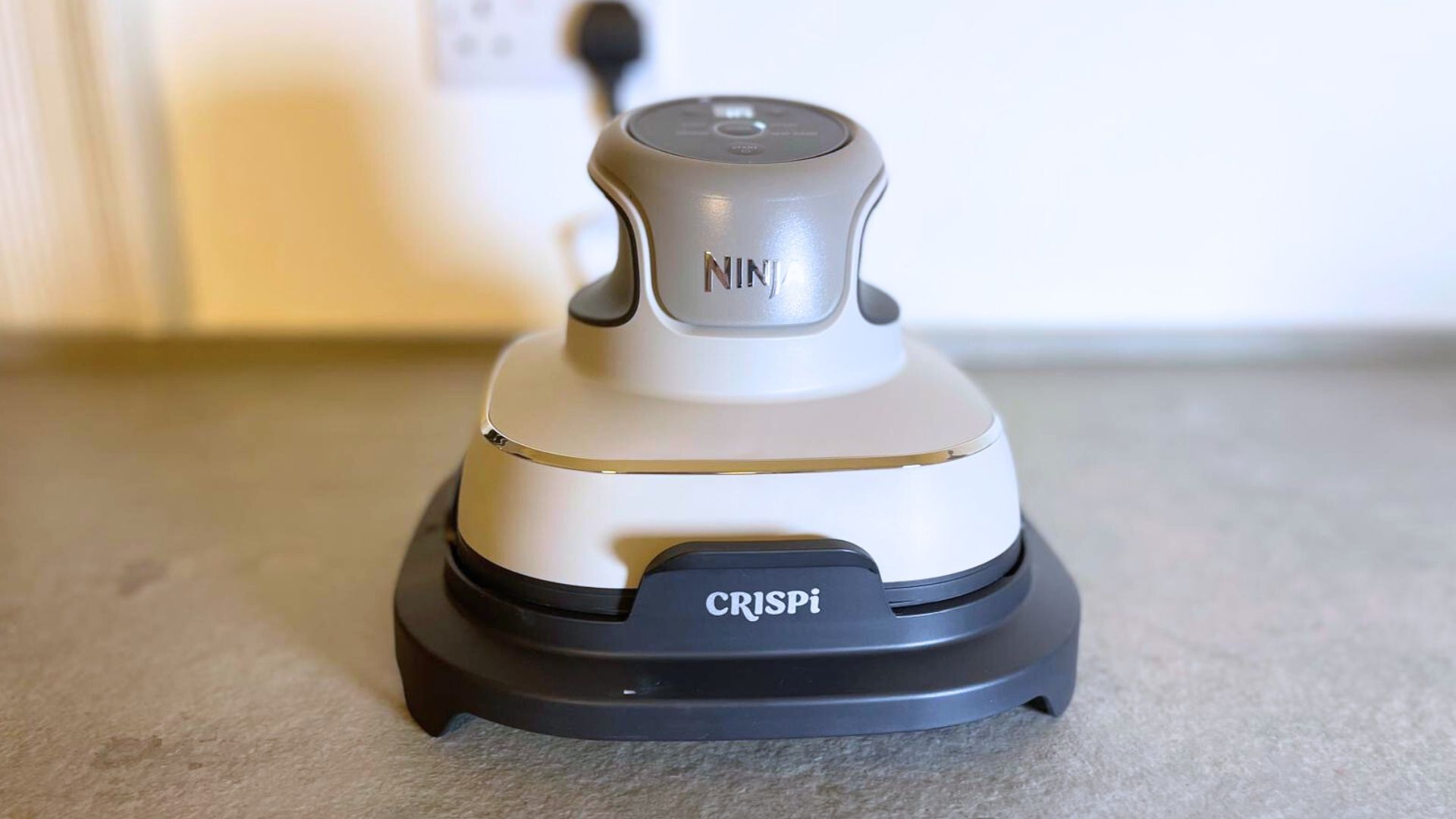
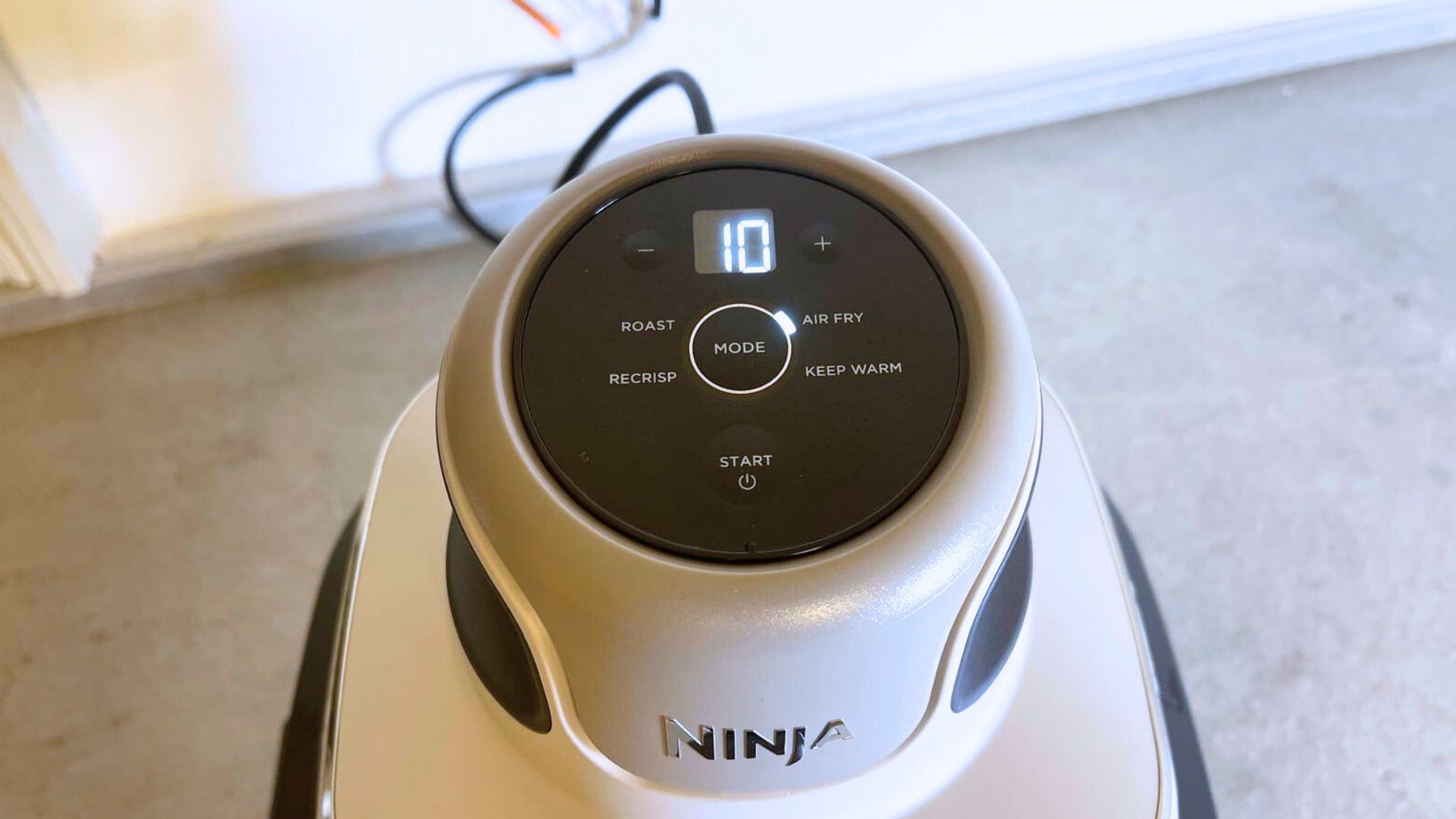

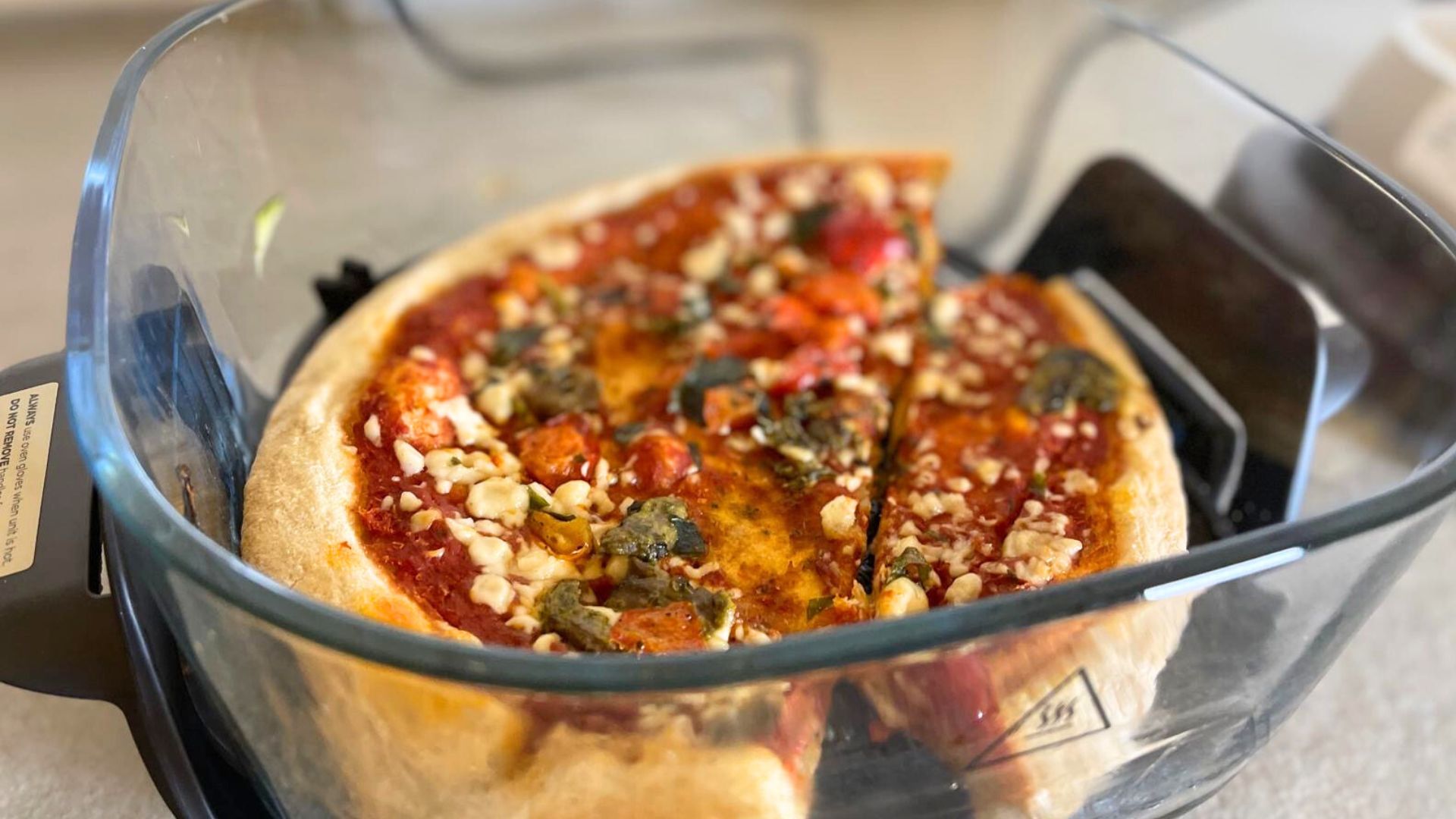
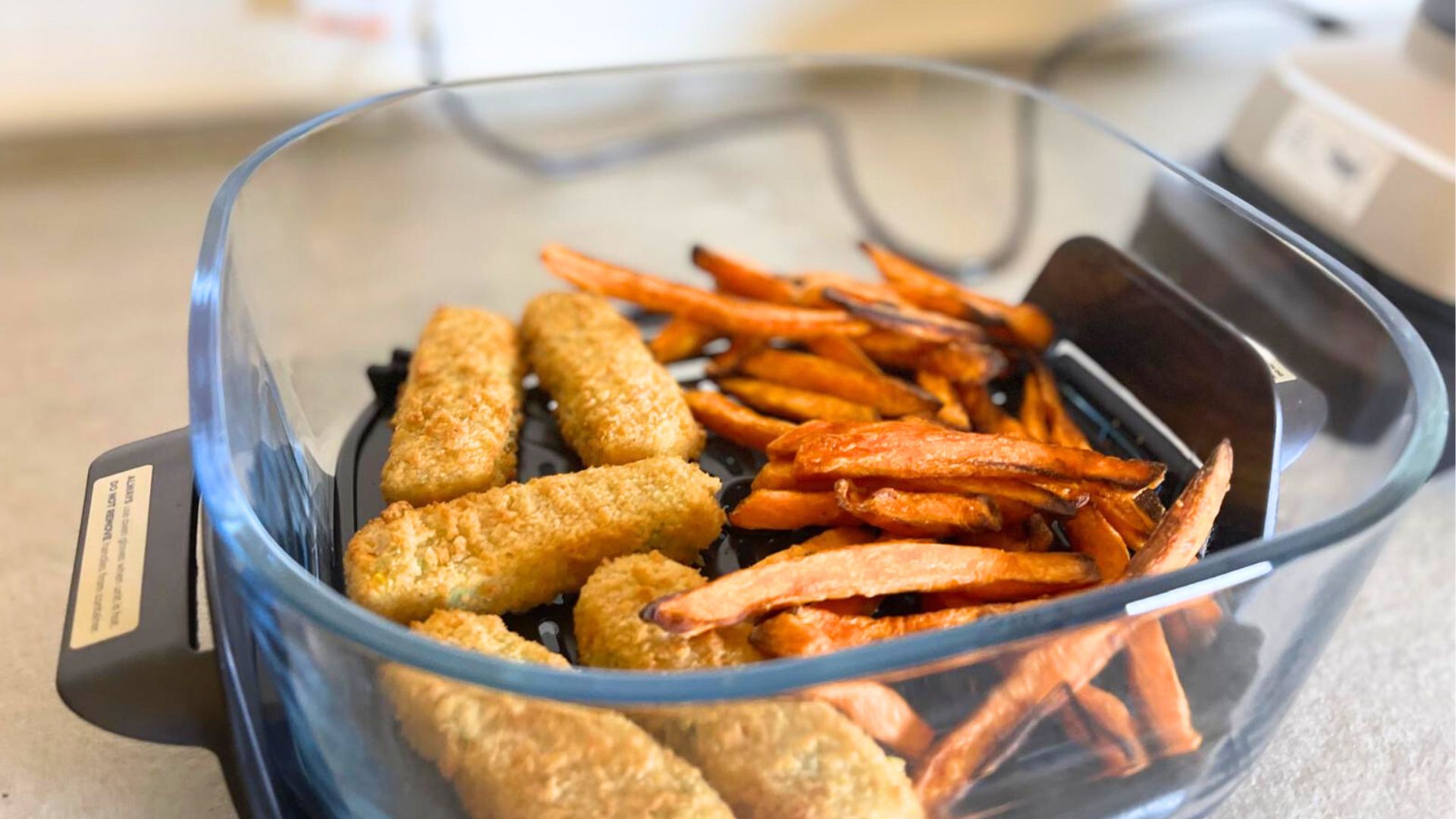
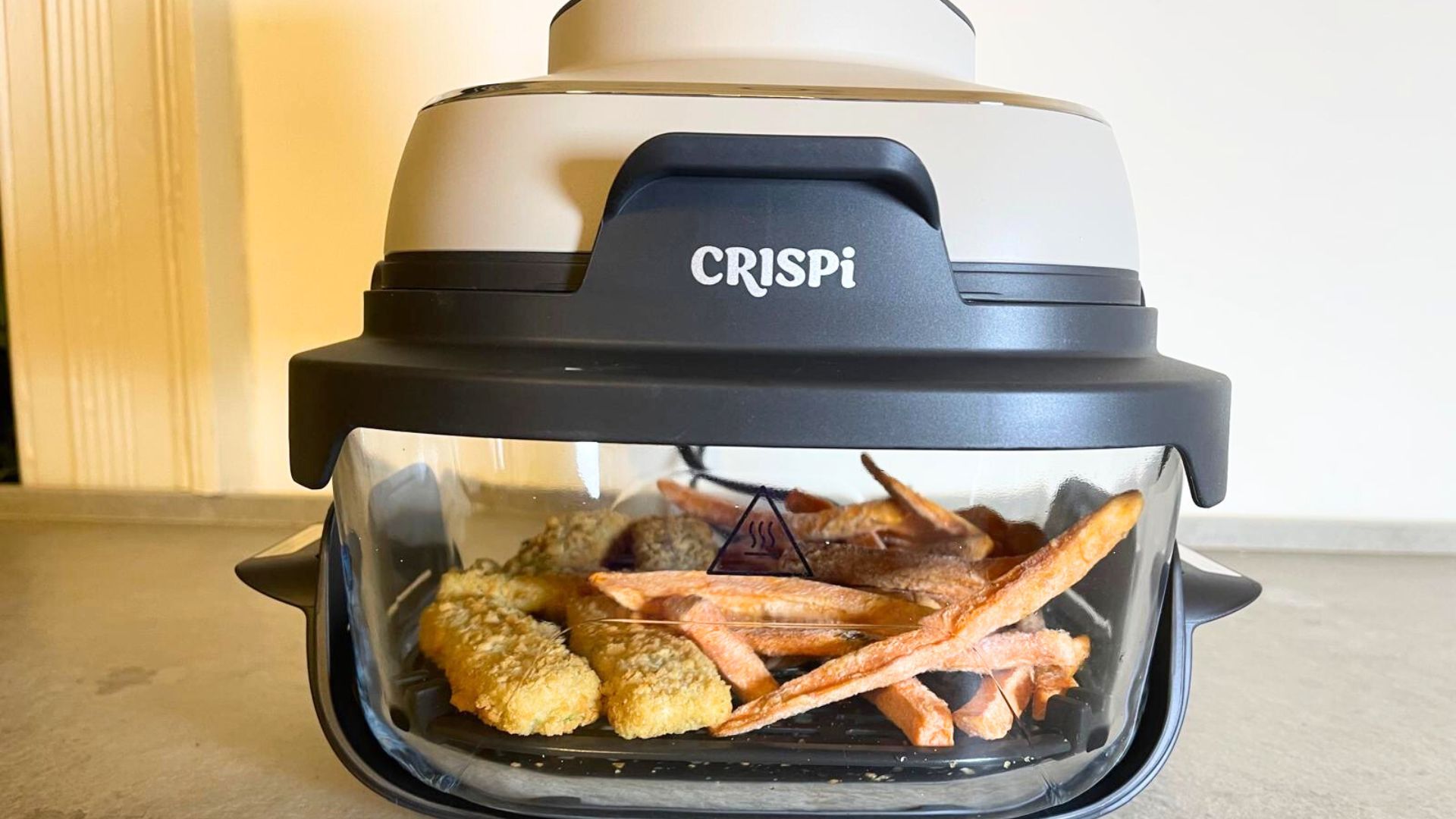
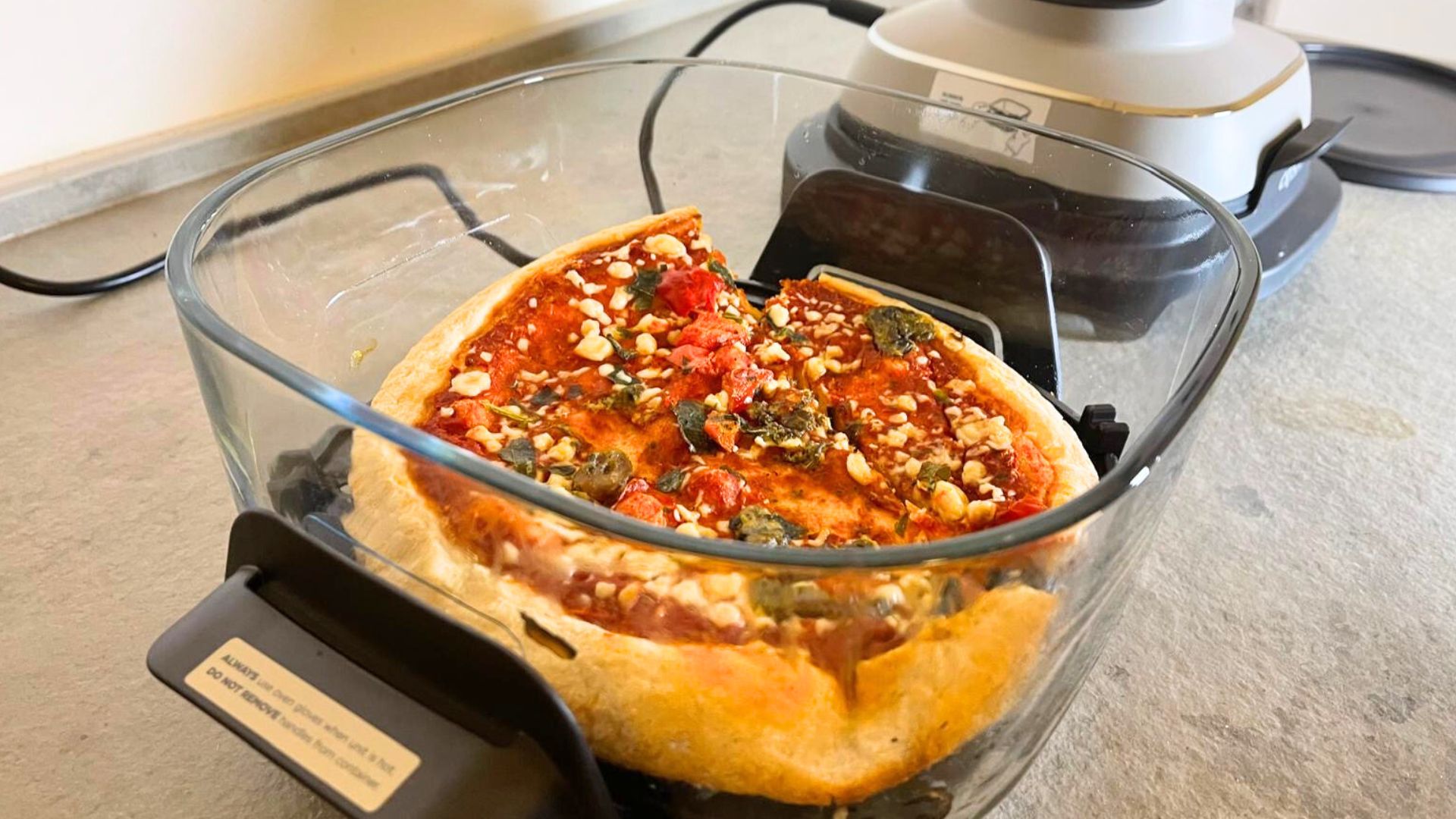
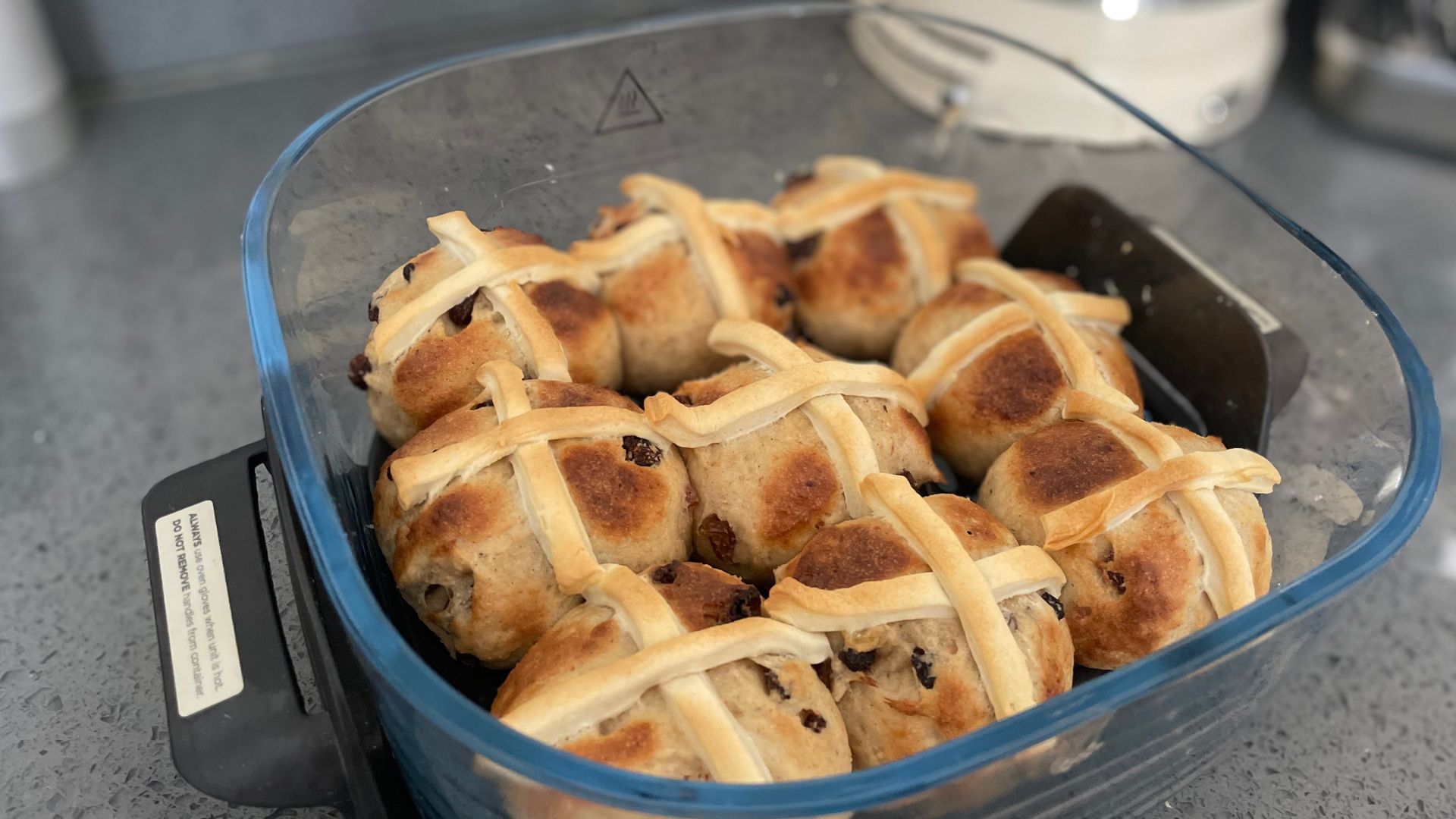
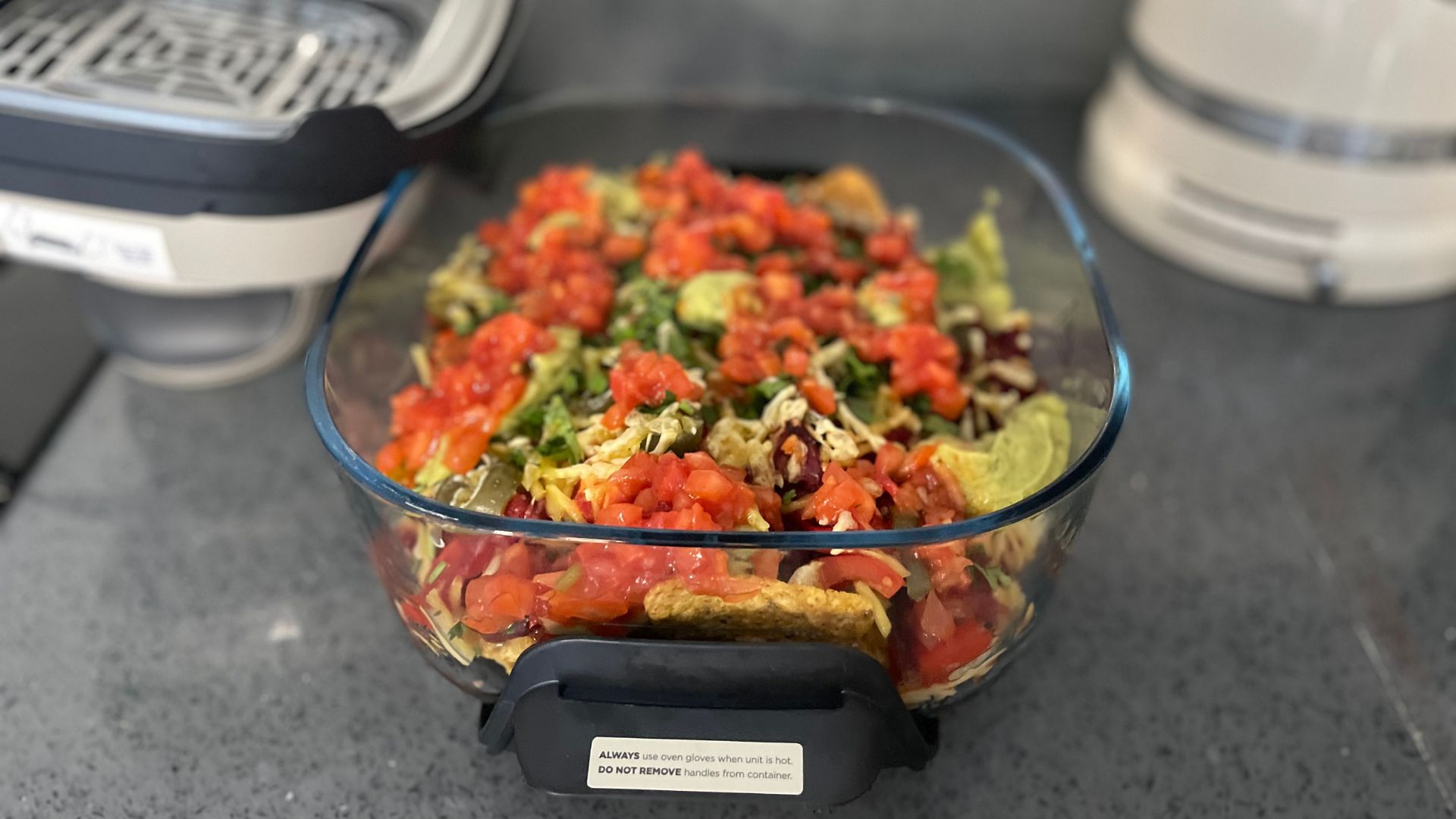
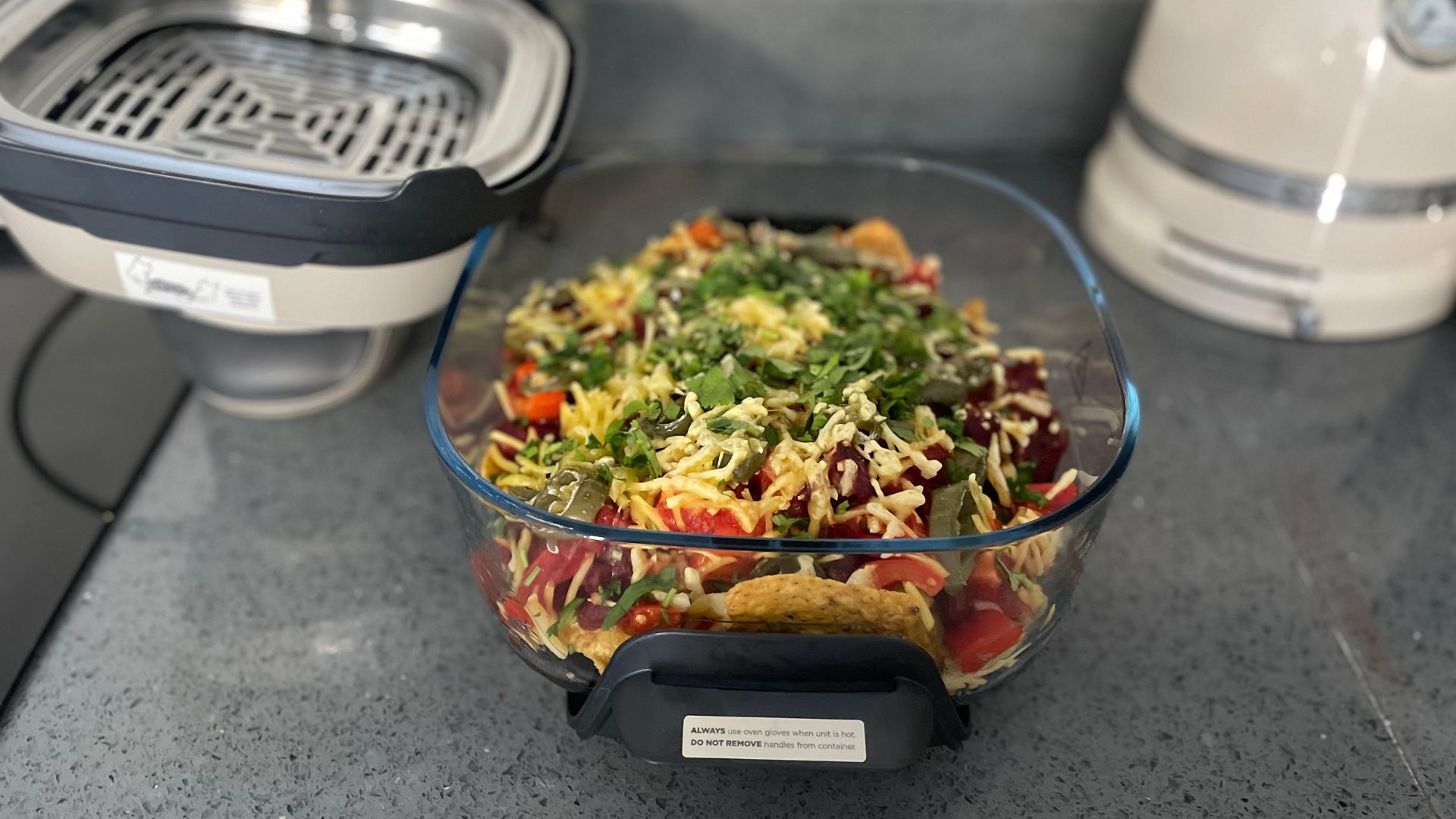
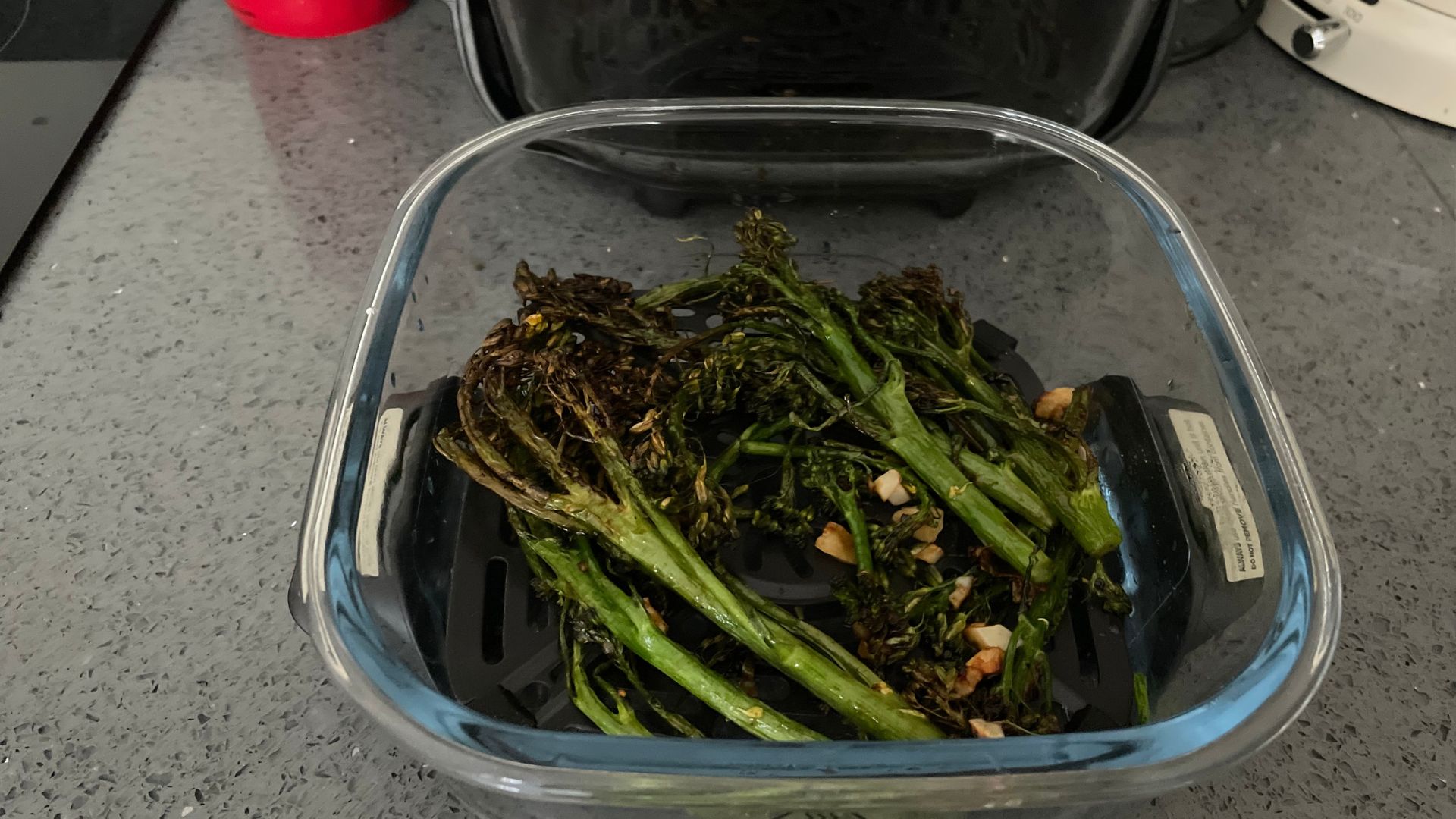
2. Ninja Crispi 4-in-1 Air Fryer
Our expert review:
Specifications
Reasons to buy
Reasons to avoid
If you're yet to see one of Ninja's best (and newest) air fryers, you are in for a treat. Like the Salter VertiCook, this is made up of glass and ceramic, both of which make really great, natural non-stick materials, Whilst the glass might take a little more elbow grease than the ceramic plates, it's dishwasher-safe and mine has come out sparkling after every wash, even when I burned marinated broccoli inside the large basket attachment.
The real beauty of the Ninja Crispi lies in its size and design. One of the things everyone wishes they knew before buying an air fryer is just how big they are. However, unlike all other air fryers, this is essentially two glass dishes with an attachment that sits on top of them. This means that you can slot the air fryer into deep drawers and really easily into cupboards. I even keep mine high up, which I would never do with other, heavier air fryers.
The other element of space-saving offered by the Ninja Crispi is that the air fryer drawers double-up as glass containers for storing your leftovers in. You don't need to wash up until you've had second-helpings the next day. Thanks to the non-stick, you can double cook without worrying about baking food onto the edges or the tray.
There's also a lot to be said for the sheer simplicity of the Ninja Crispi. The top lid will let you toggle between air frying, roasting, baking, and reheating. When you boil air fryers down to their basics, this is actually all you need. I treat it like my temperature control, because you can't change the settings beyond those four. Naturally, you also have a timer integrated if you want to leave the air fryer to cook, but it's worth keeping an eye on your food through the glass. You don't often get this level of transparency in air fryers.
Find out more in my full Ninja Crispi 4-in-1 Portable Air Fryer review.
Best non-toxic air fryer oven
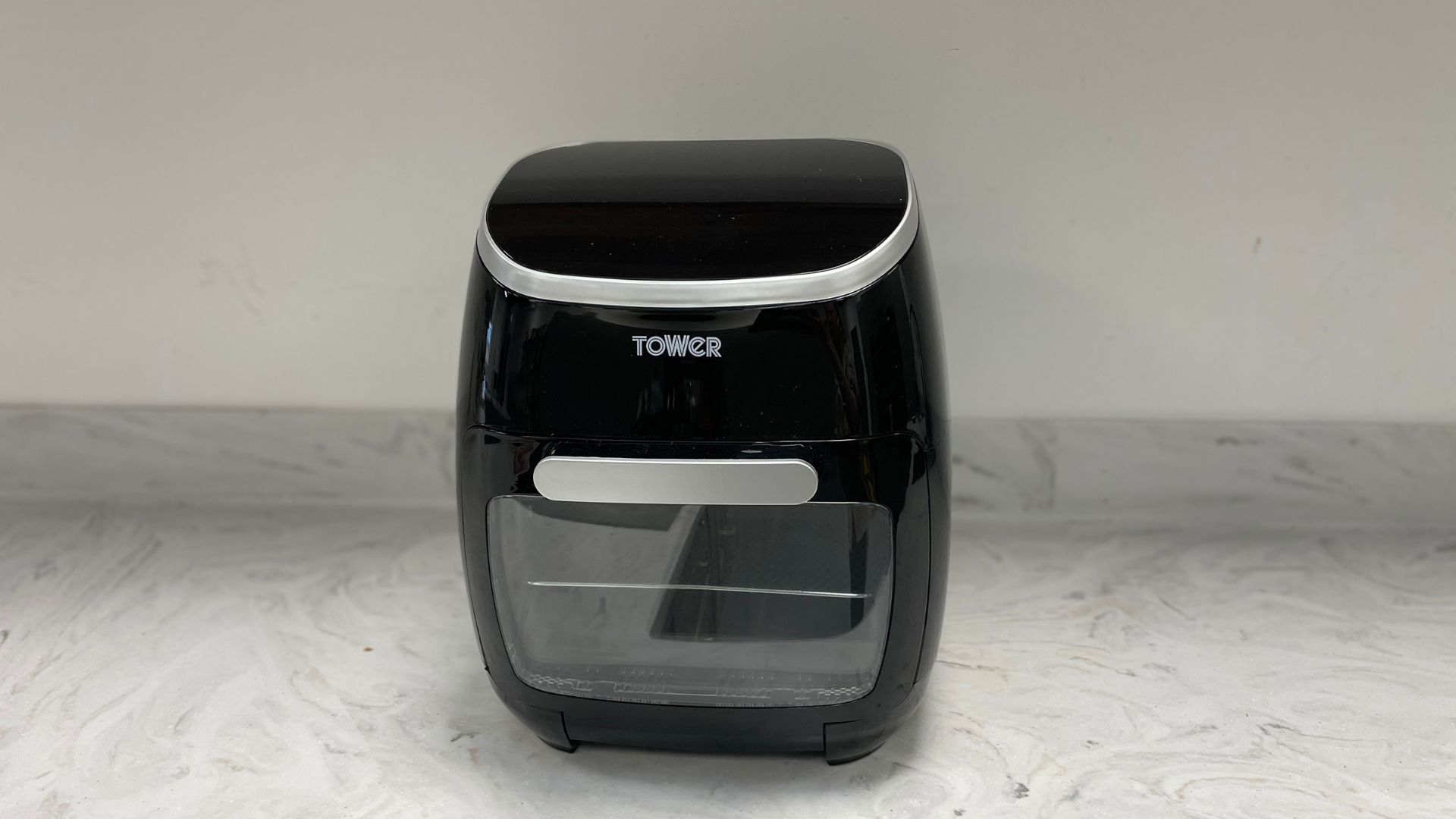
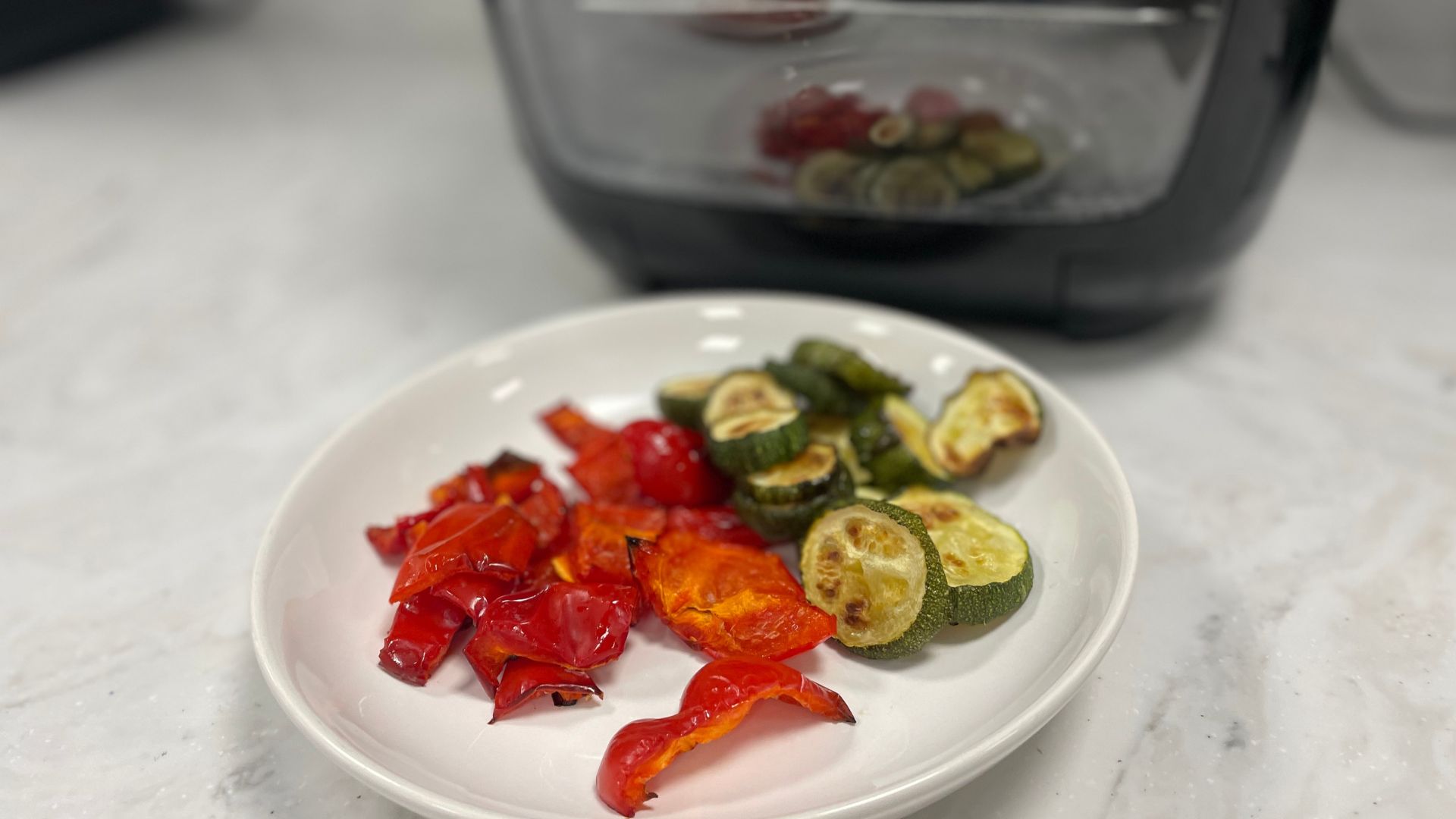
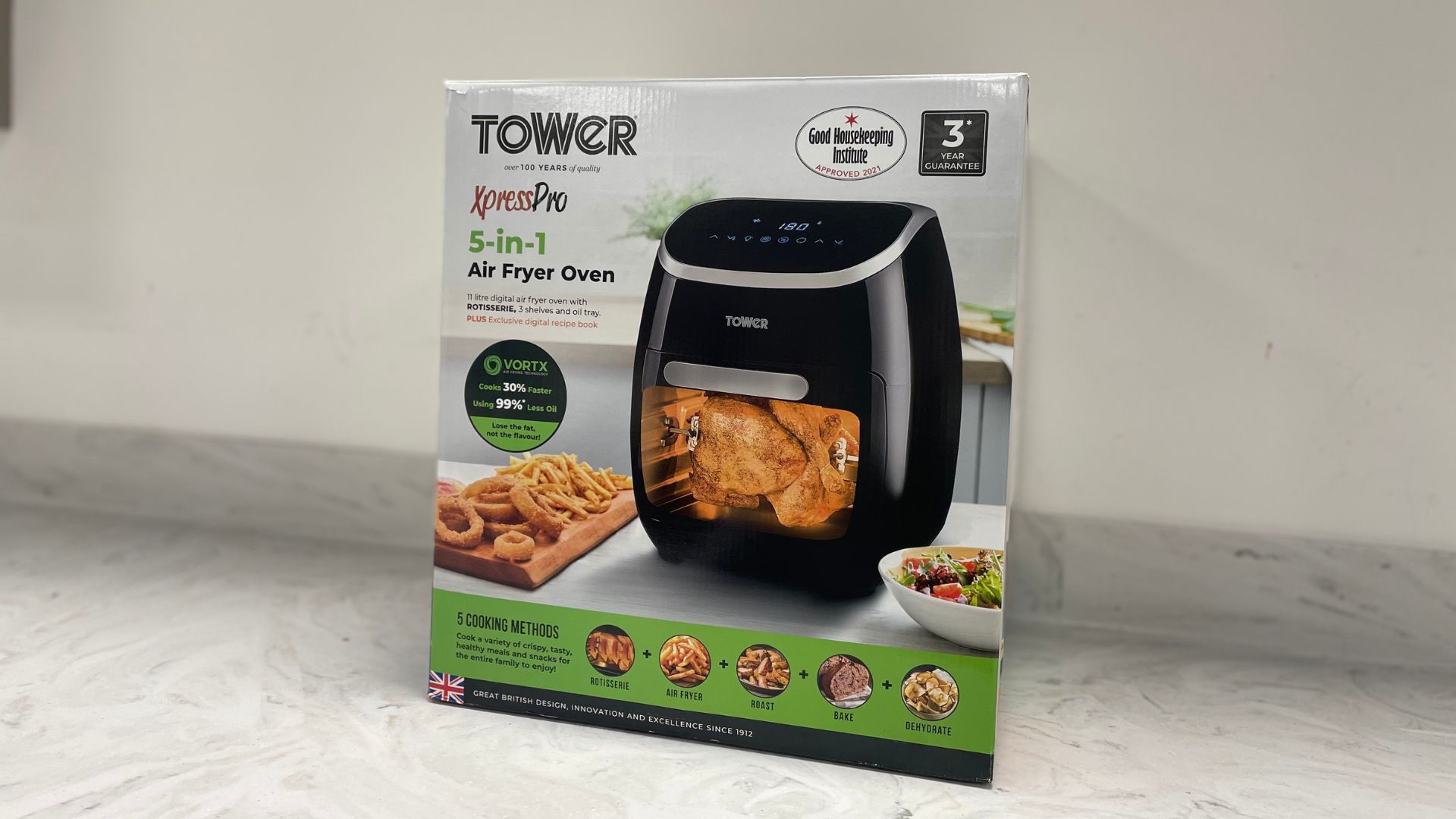
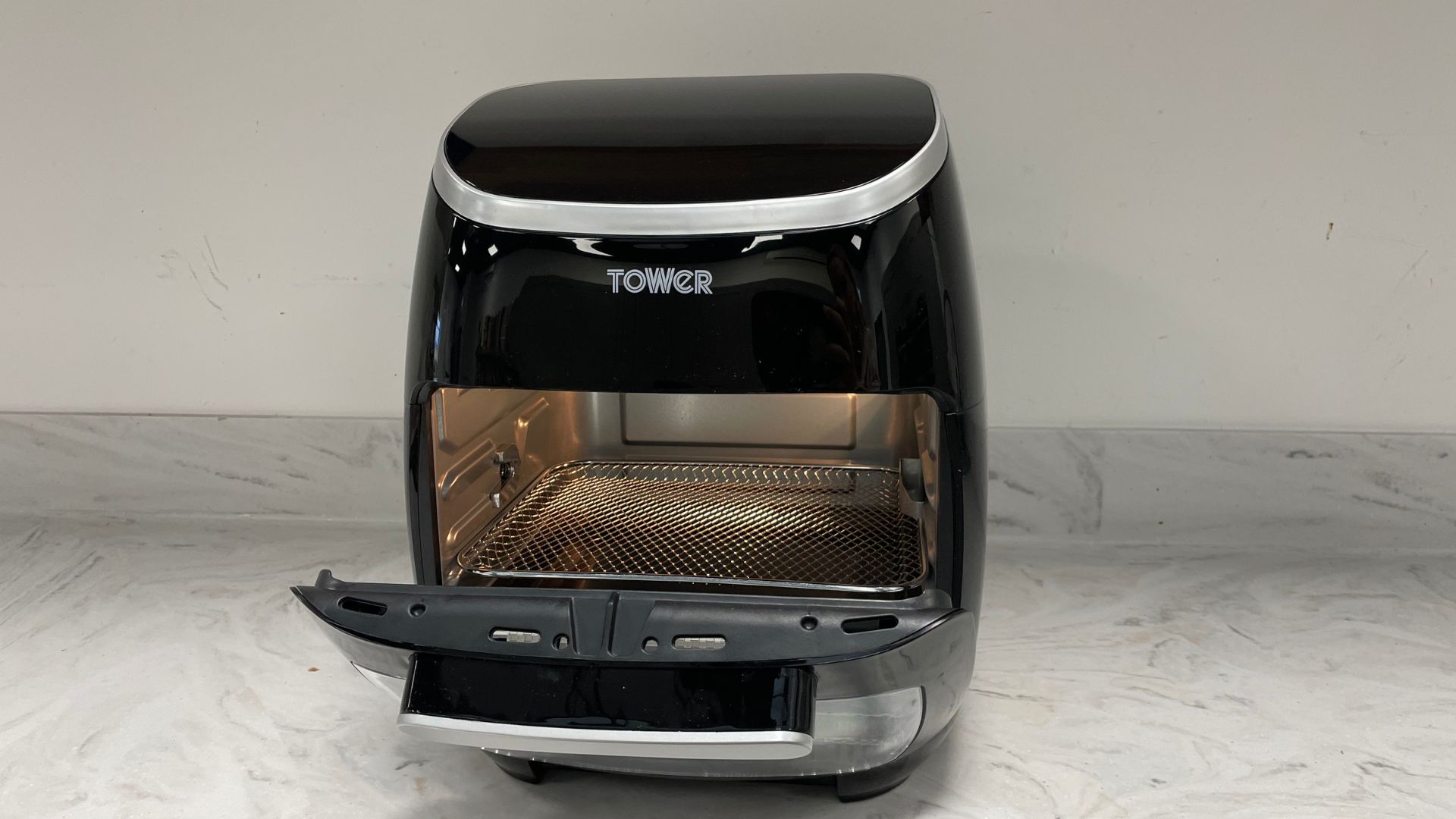
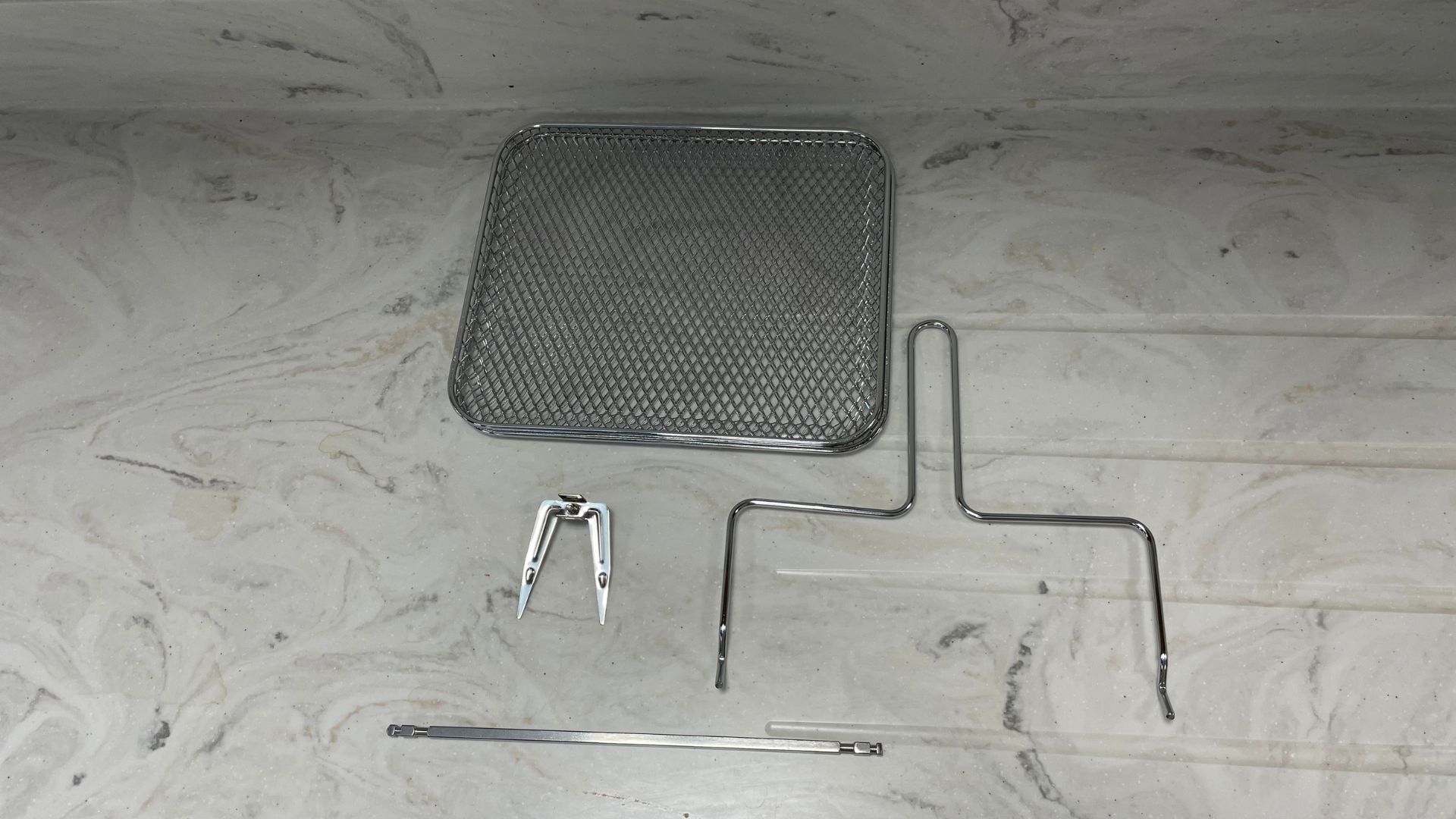


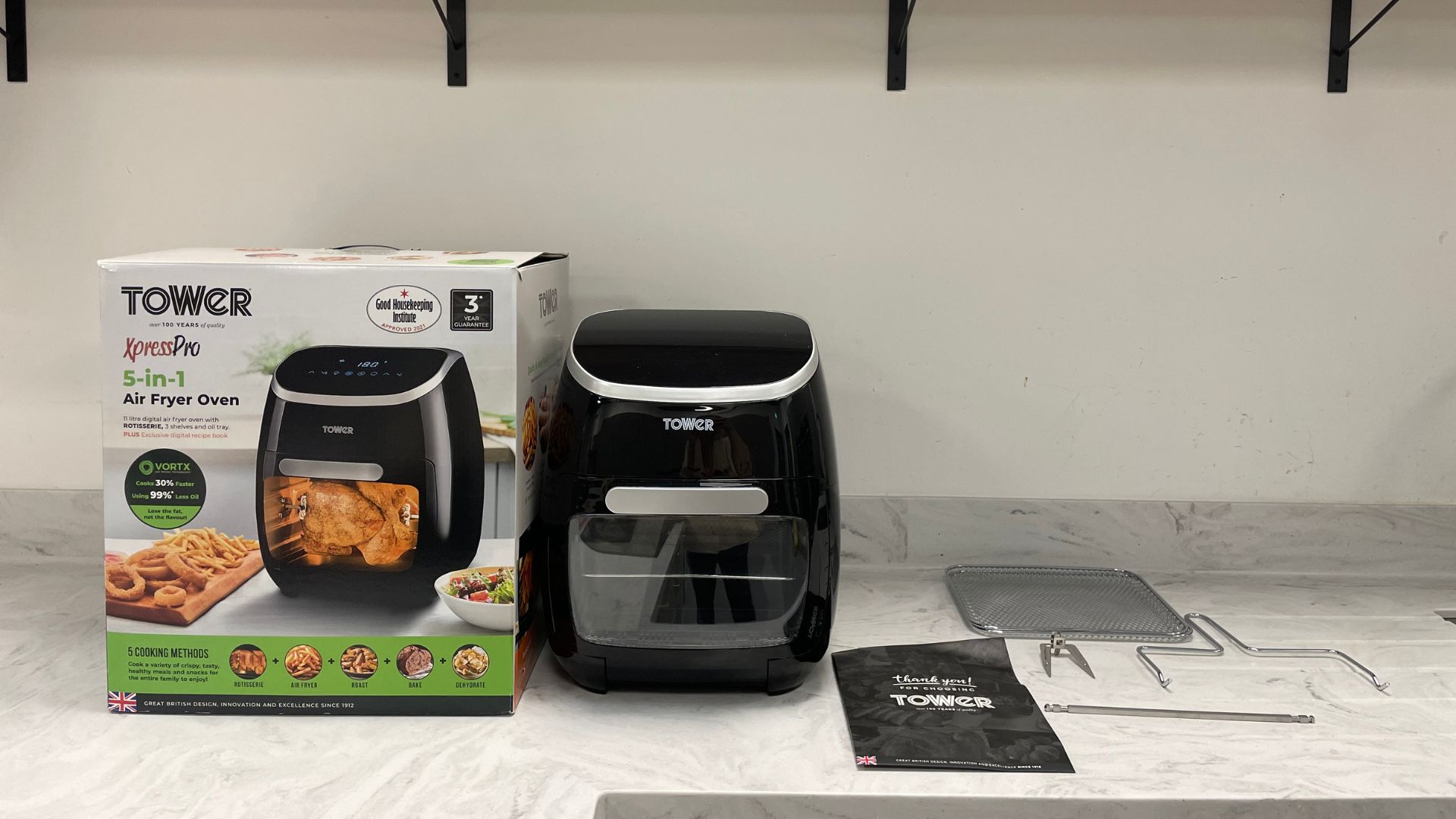
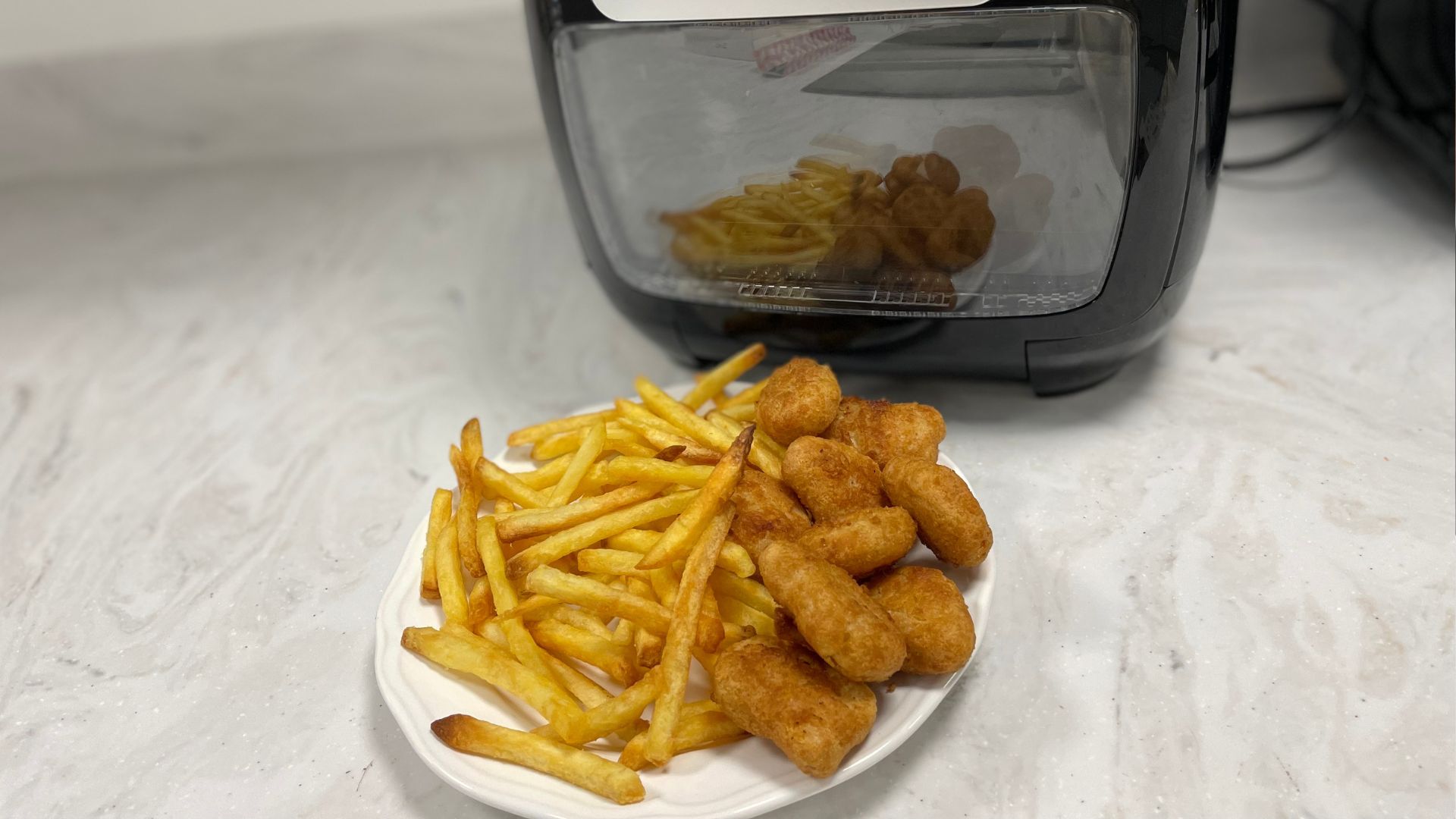
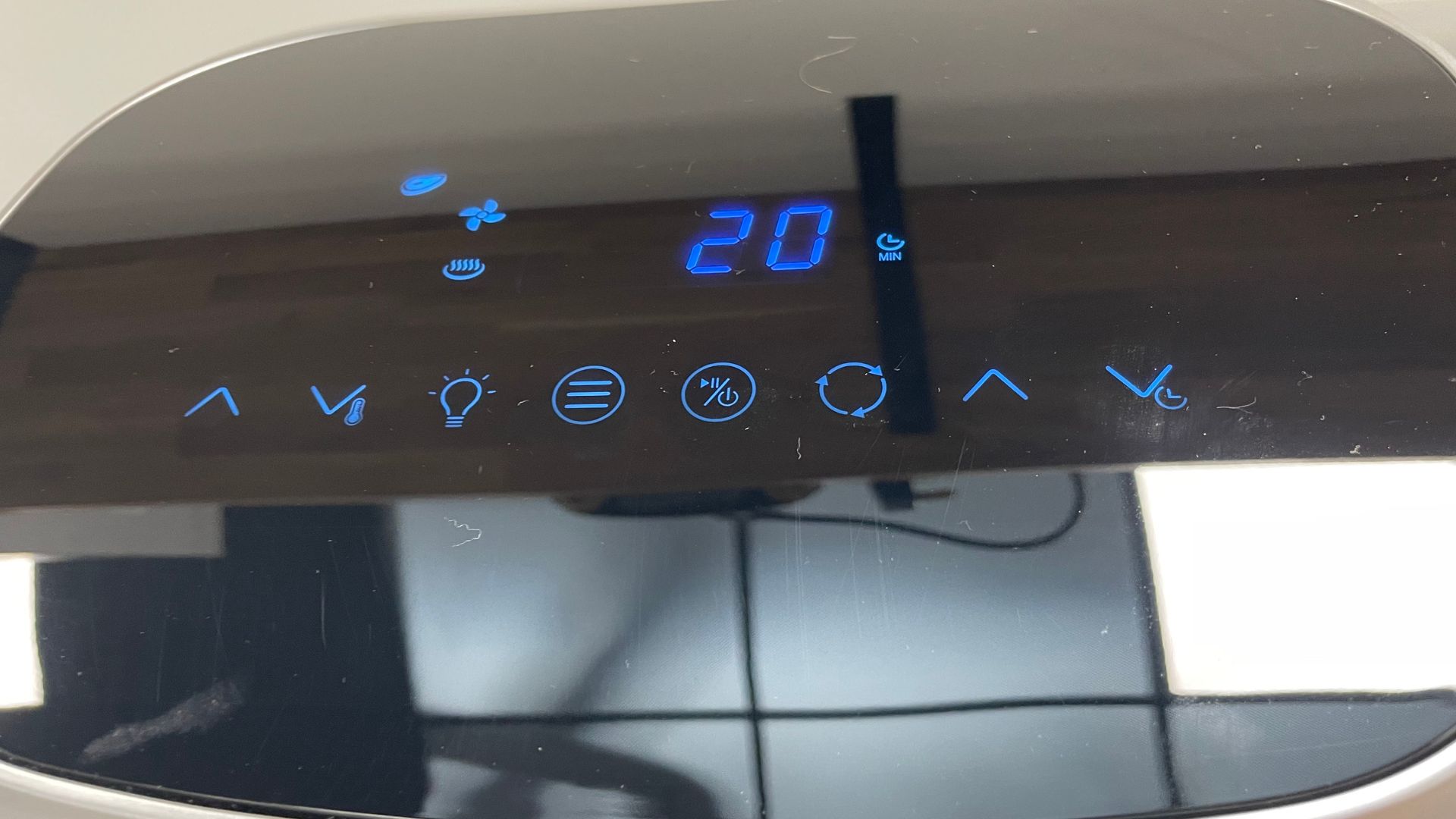
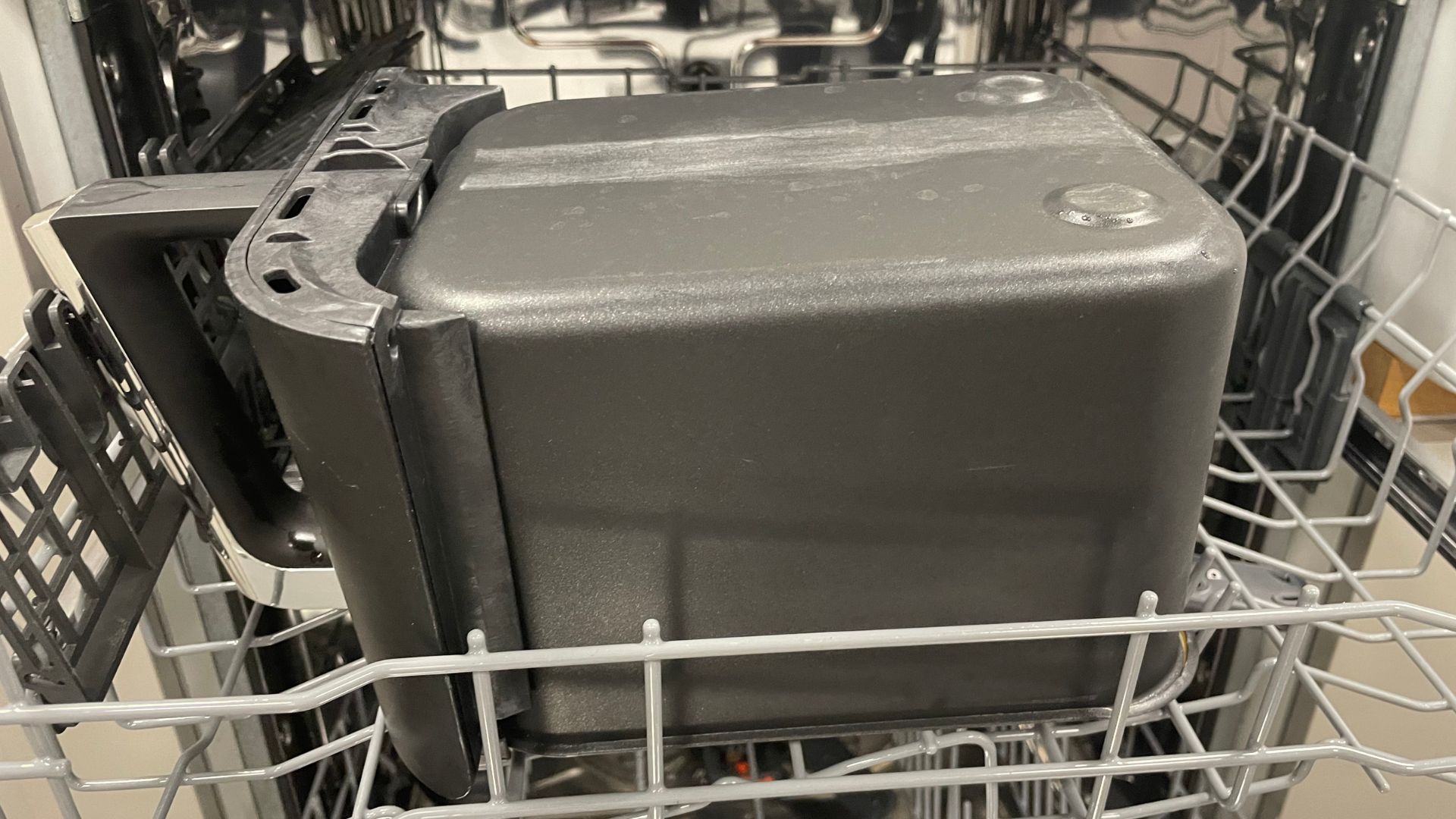
Specifications
Reasons to buy
Reasons to avoid
Whilst the Ninja Combi Oven made a compelling case as the best non-toxic air fryer oven, the Tower XPress is the one that sealed the deal. Sleek, smart, and relatively compact (in terms of mini ovens), this is brilliant.
We can start with the non-stick, which is stainless steel in this instance. If you have stainless steel pans, you'll know that when they reach certain temperatures, stainless steel becomes a natural non-stick. And, if you're cooking at cooler temperatures it doesn't matter if a little food stays on the material, because you can use a rough sponge to get it all off. I found that the Tower brilliantly whizzed its way through cooking bacon, chicken nuggets, chips, and grilled vegetables without any tough stains that needed more than my attention scrubbing.
A good non-stick won't secure a spot here though, it needs to excel as an air fryer too and the Tower really does. All ten pre-sets, denoted by fun icons, take you from air frying (naturally), roasting, and baking to more specialist functions, such as rotisserie, dehydrate, pizza, chargrill, kebab, and toast. In essence, this more than earns its spot on the counter.
All my classic tests came out with top-tier results when I used the Tower XPress. One of our sister magazines even put the rotisserie function to the test and made "the best chicken ever," which is an immense compliment when you consider that these are tests we run daily. As an oven, it is bigger on the counter than the other two, but you get a whopping 11-litres of space, which is more than enough for anything from a roast dinner to baking a full-sized cake.
Find out more in my full Tower XPress 10-in-1 Air Fryer Oven review.
Where to shop non-toxic kitchen products
If you're interested in swapping out other non-stick parts of your kitchen, be it your induction pans or bakeware, there are plenty of brands that boast natural, non-toxic coatings. Here are some of my favourites:
- Greenpan: all natural, all ceramic pots and pans
- Joseph Joseph: expertly-designed kitchenware with cautious materials
- Le Creuset: their stainless steel pans and cast iron are naturally non-stick
- Our Place: an array of non-toxic kitchenware
- Salter: a trusted place for non-toxic kitchenware
- Staub: as with Le Creuset, the enamel does the work
How we test non-toxic air fryers

The non-toxic air fryers that you see on this list have to live-up to the standards of all the best air fryers on the market, so they go through exactly the same tests. I start by researching the best air fryers, looking at all of the details, and if they're non-toxic, I make a note of that for this guide. After selecting the ones that I think you'd like, I take each air fryer to the test kitchen, where I put it through its paces.
The tests start with simple, classic air fryer foods, such as chips and fish fingers. I look for crispy outsides on all the foods and I want them to be hot all the way through, but I don't want them to be dry or leathery. The chips should be fluffy, the fish fingers should be tender and the same applies to my other tests too. These span from grilled vegetables through to brownies, cookies, and reheated pizza. Essentially, by the end of the tests, you should have a really good idea of what the air fryer is like to use and how versatile it is.
After that, I'll walk you through the clean-up and maintenance of each model. It's important that you know how to clean an air fryer properly, so that it's always safe to use.
I'll also set-aside space in a review to talk about the value of the air fryer and how it compares to other models on the market. I like to show you what you can get for a little less and a little more money, so you can make an informed decision on what works for you. I'll also talk about how expensive the air fryer is to run and whether you need any accessories too.
If, after all that, you still have questions, you have two options. You can take a look at our page for how we test air fryers, or you can email me. I'm always happy to talk about all things air frying.
FAQs
What do I do if my air fryer is toxic?
If your air fryer has some of the PFAS chemicals that have raised causes for concern, there are a few things you can do. First, keep your air fryer in good condition. Be careful not to scratch the surfaces of your baskets or drawers and wipe them with a soft sponge or cloth. Dr Swails also recommends "looking for liners made from uncoated parchment paper that are labelled PFAS-free—these are safer options that won’t release toxic chemicals when heated."
What are the safest, non-toxic air fryer basket materials?
Ed McCormick says “the safest options are ceramic-coated baskets or uncoated stainless steel. These materials don’t leach chemicals at high heat and are free of PFAS, PTFE, and BPA — all of which are best avoided for long-term health.”
Is it safe for PFAS to be on the exterior of an air fryer?
Ed McCormick, food scientist with a background in ingredient and food safety, says that “PFAS on the exterior surface is less worrisome, since it doesn't come into direct contact with food or high heat. But ideally, a truly non-toxic appliance avoids these substances entirely, inside and out.”
How do I stop my air fryer from being toxic?
Beyond buying an air fryer that uses natural non-sticks, Ed McCormick has some extra tips. "Avoid overheating the air fryer beyond the recommended temperature," he says, "especially when the basket is empty. Also, replace your air fryer if the nonstick coating begins to flake or degrade. That’s when toxins are most likely to leach.”
How much should I spend on a non-toxic air fryer?
I'd allocate the same budget for a non-toxic air fryer as I would for any model. A cheap one should start around £50, but you'll get better, more durable non-sticks around £100-150.
Sign up to our free daily email for the latest royal and entertainment news, interesting opinion, expert advice on styling and beauty trends, and no-nonsense guides to the health and wellness questions you want answered.

Laura is woman&home's eCommerce editor, in charge of testing, reviewing and creating buying guides for the Homes section, so you'll usually see her testing everything from the best dehumidifiers to sizing up the latest Le Cruset pot. Previously, she was eCommerce editor at Homes & Gardens magazine, where she specialised in covering coffee and product content, looking for pieces tailored for timelessness. The secret to her heart is both simplicity and quality. She is also a qualified Master Perfumer and holds an English degree from Oxford University. Her first editorial job was as Fashion writer for The White Company.